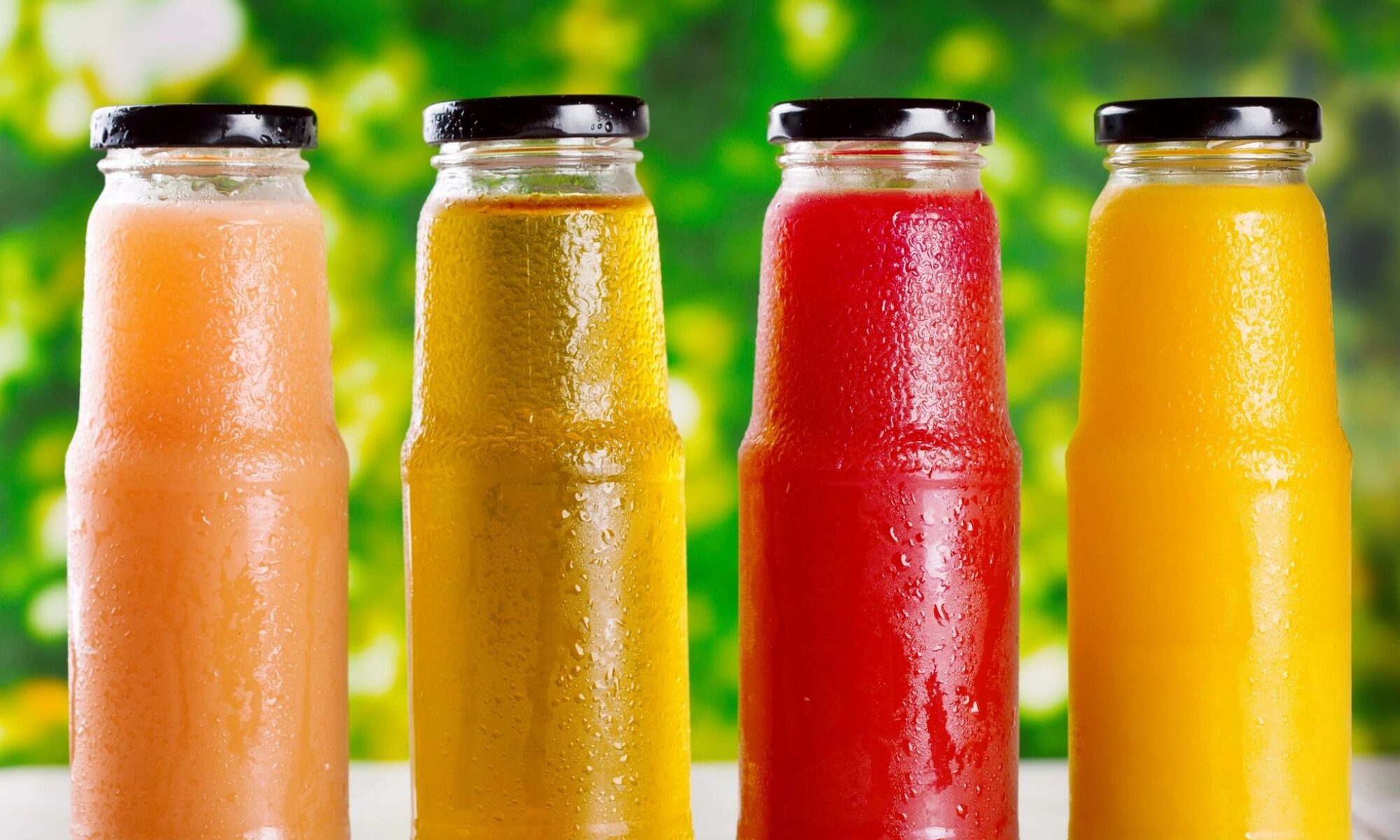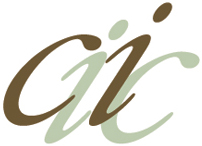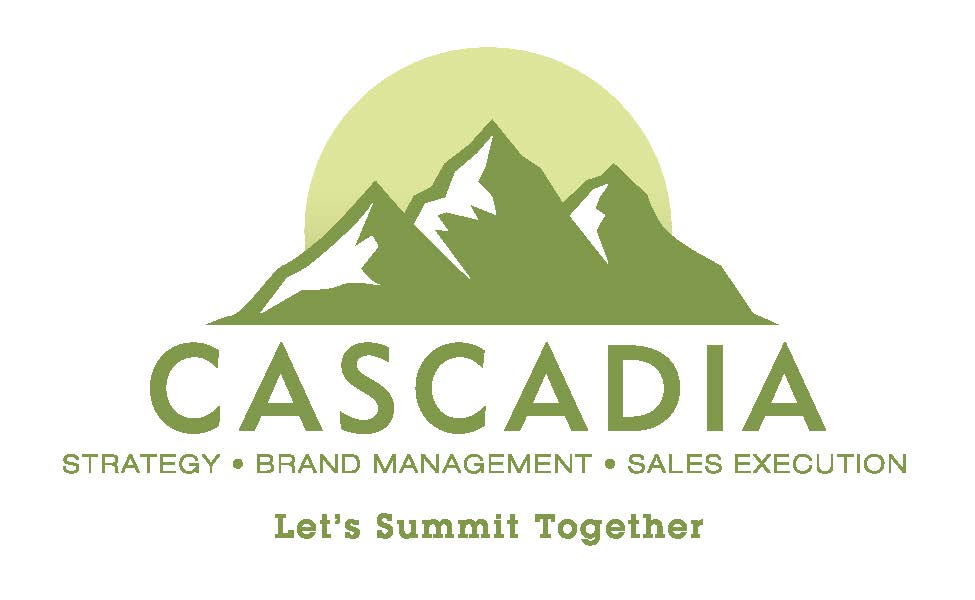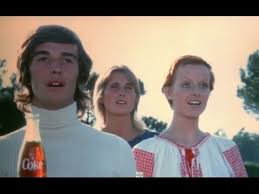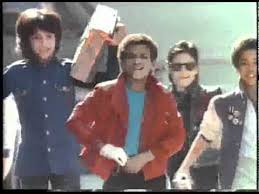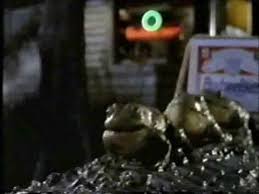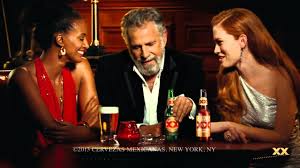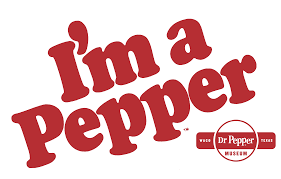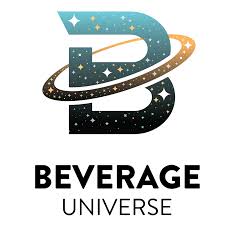The Importance of Public Relations for Food & Beverage Brands
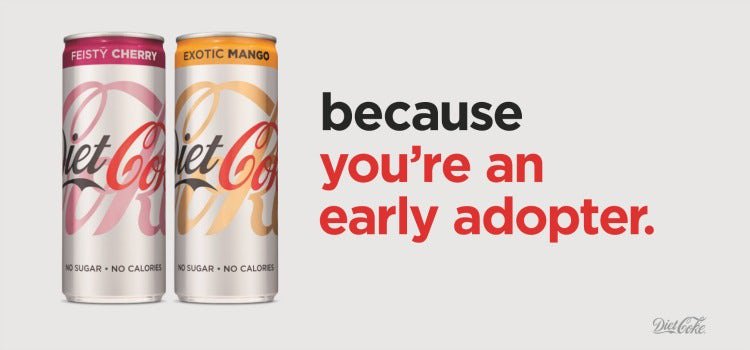
Hiring a public relations agency at the right time is crucial to the success of your brand, especially in this “Amazon Era”. A dedicated PR agency not only helps create brand awareness before and after a product launch, but also offers a plethora of services important to your overall ROI, including securing A-list press coverage, brand exposure, consumer activations, creative campaign ideation, social media management, influencer marketing, brand partnerships, and crisis communications, among other services.
Word of mouth is a powerful tool, however strategic media relations outreach and a measurable public relations program — whether you are a startup or an established brand launching a new product — will help determine the right messaging and strategic approach to ensure you reach your target consumer.
When to hire a PR Agency?

There is a common misconception that brands should engage a PR agency after they launch their product or service or once they are available for distribution, ie, at Amazon or other e-commerce platforms. Hiring a PR firm is like bringing on an experienced partner to help you throughout the “on boarding” process, from start to finish, whether it’s a rebranding, important company development or a product launch. Additionally, it often takes months to get a good PR hit (yes you get PR before 3 months),—but consider the time it takes to select the right media targets, the time it takes to send them samples, the time it takes to follow up, and the timing of their editorial calendar. Additionally long lead magazines like Everyday with Rachel Ray, Vogue, etc. work on “long lead” times which can be 3-6 months. Most long lead publications, as of the day of this writing, are already working on their November and December holiday issues.
Your PR agency will not only promote the launch of your brand or product, but will work with you from the beginning to develop creative strategies and ideas that will attract the media, retailers and distributors and your target consumer audience. They work in partnership with you to create key messages, support with website copy and content development, and conduct focus groups to learn what your consumers are looking for and how they will respond to your product launch. They often help in creating ideas that generate attention from distributors and retailers and make your brand stand out. No one wants to be considered “just another brand” by buyers.
Involving a PR company during your start up stages strengthens your brand’s credibility, builds momentum, and stimulates consumer demand. Consumer trust can also be destroyed when a company promises one thing but delivers another. Look at many poor Amazon reviews and you will see a lot of companies unintentionally over promise and under deliver. Therefore, messaging should be managed carefully. When it comes to a product launch, the consumer will already have perceptions of the brand’s product based on word-of-mouth, social media messaging, media articles, product reviews, and marketing efforts. By having all of these key tactics in place, you have a better opportunity to launch your produce or service successfully.
How does PR support Amazon reach & sales?
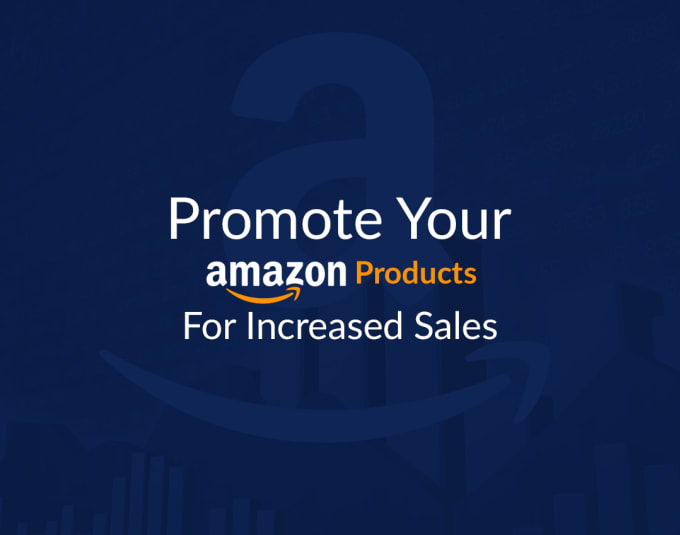
What role does PR play in Amazon sales and distribution? Product availability and Amazon distribution are promoted through public relation efforts via press releases, social media messaging and secured media coverage. When media outlets include a brand or product in a round up or feature article as a result of the PR agency’s outreach, they include the Amazon link where readers can purchase the products, resulting in sales and website traffic.
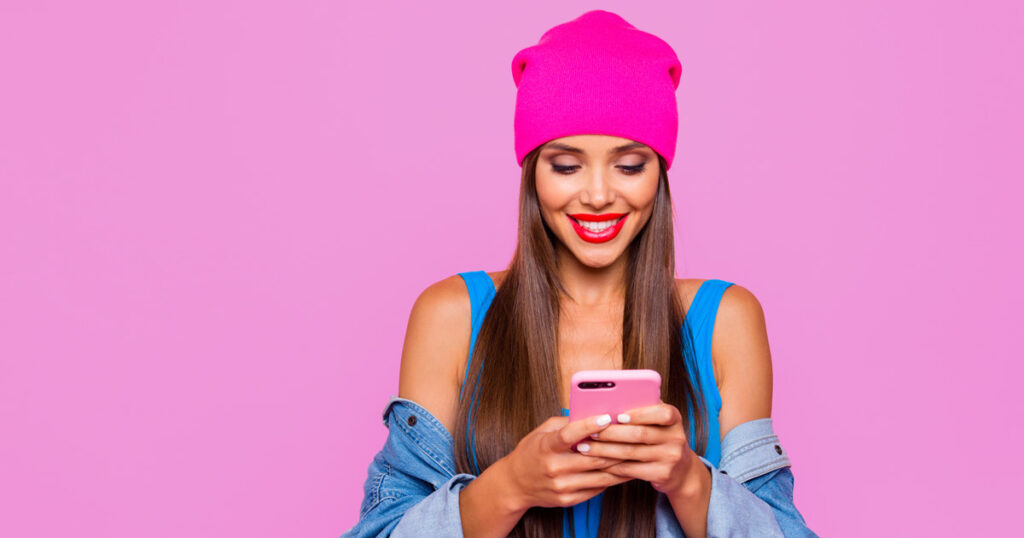
Another way PR can support Amazon sales is through influencer marketing. Influencer marketing has become one of the most sought -after channels to reach consumers organically. Whether we like it or not, content creators and influencers are here to stay and their power and influence in consumers’ behavior and choices will continue to grow.
Like many businesses, Amazon engages with influencers to promote its products through affiliated links. Through the Amazon Influencer Program, influencers receive a portion of the sales of a specific product they promote in their social media or blog when people click through the affiliated link. Although there are no additional fees for brands and Amazon covers the commission for each unit the influencer sells through their shop, there is no guarantee influencers will promote your product unless you are working directly with the influencers.
Here is where your PR agency comes in to support through an influencer partnership and campaign. Your PR agency partner can manage the influencer campaign on behalf of your brand by carefully vetting influencers, providing recommendations, drafting the messaging, providing key branding assets and overseeing deliverables and results.
For a brand trying to increase their sales on Amazon, leveraging influencers is a great way to raise brand awareness, grow exposure on the platform, and generate sales as influencers have the credibility and an audience who is looking for their recommendations.
Want to learn more?
Cascadia has partnered with CIIC (www.ciicnews.com) to provide consulting or project-based PR services to brands looking to successfully compete in the food & beverage industry. Contact Paola Cuevas at [email protected] to learn more about their food & beverage experience and how they can help you get your product in the news and “off the shelves” in no time.
Cascadia Managing Brands offers its clients outsourced sales, brand management, Amazon setup and sales, traditional retail sales, marketing, new product development, operations, production and logistics.
Cascadia Managing Brands helps brands reach critical mass faster, cheaper, better, and smarter. From business plan development to the actual execution of the plan, from strict consulting advice to managing your sales or sales team, marketing and operational plan; Cascadia Managing Brands is the outsourced resource for large and small beverage companies alike.
Cascadia Managing Brands has over 75 plus years of food and beverage experience including Evian, Zico, Hint, C2O Coconut Water, Nantucket Nectars, Fresh Samantha (Odwalla), Naked Juice and many more.
For more information about Cascadia Managing Brands please visit us at http://www.cascadiamanagingbrands.com. Please visit our Facebook Page at http://www.facebook.com/Cascadiamanagingbrands or our Twitter page at http://twitter.com/cascadiabrands.
For additional information about Cascadia Managing Brands go to www.cascadiafoodbev.com
eCommerce: Thriving in Our New Normal
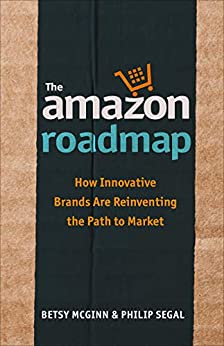
Written By Betsy McGinn and Bill Sipper
I started working with Betsy McGinn several months ago. Betsy is the leading expert on selling on Amazon and has written and excellent book called The Amazon Roadmap: How Innovative Brands are Reinventing The Path to Market.
Betsy has given us an MBA in Amazon and since we have started working with her and since she has been coaching us our clients have greatly increased their Amazon sales. Betsy handles the strategy and we handle the execution.
Betsy and I decided to co-write an article a few months ago. However, I will be the first to note that Betsy is the author of this article and I am just the “co writer”. The information contained in this article will hopefully help you understand and prepare to increase your Amazon sales…
A byproduct of the threat of COVID-19 is that it’s taken eCommerce in the US to new heights. Amazon.com has hired 175,000 new employees, Instacart has been forced to scale in ways and at a speed never dreamed of, and high demand has resulted in continuing out-of-stocks on some essential items we all need. The subset that so many of our clients play in – grocery – has grown in ways no one predicted, and may even accelerate the adoption of online grocery by 4 to 5 years. Brands are scrambling, not only to meet consumer needs, but to up their game in eComm. eCommerce no longer represents incremental “nice-to-have” sales; it’s now essential to a brand’s success, and maybe even its survival.
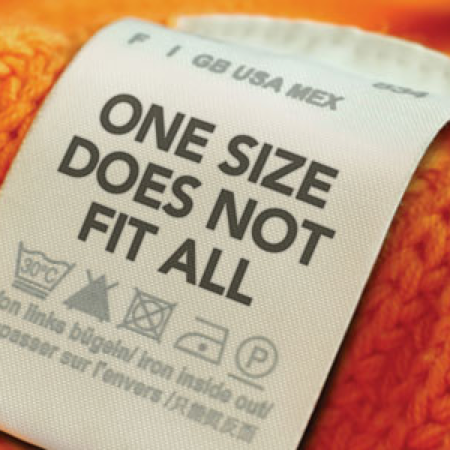
But here’s the challenge: eCommerce strategy and execution aren’t one-size-fits-all, and can’t be relegated to a single division within your company to handle. Everything about this new retail dynamic requires a commitment of the whole organization to truly understand, and to meet the needs of this varied and often confusing channel. Here’s why: Amazon is nothing like Direct-to-Consumer (DTC), which is nothing like Fresh Direct, which is nothing like Instacart. Yet, many companies lump any retailer with a .com in their name into one bucket.
Let’s break it down.
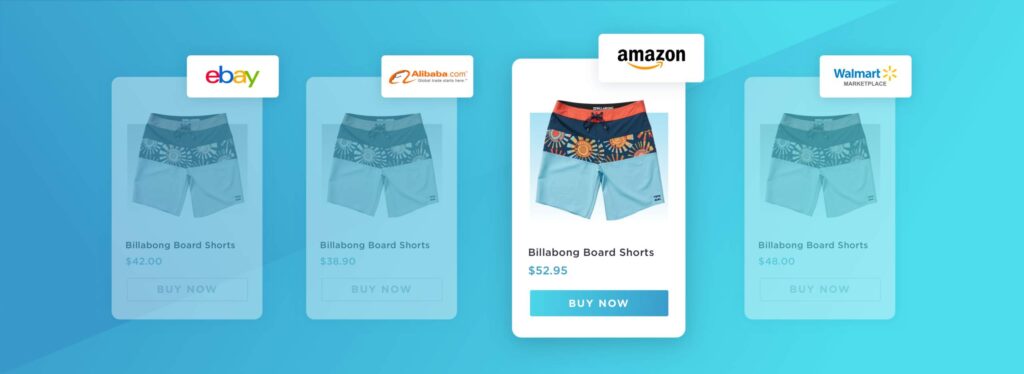
Amazon is the beast of eCommerce. Whether you love ‘em or hate ‘em, they account for 49% on online sales, and are by far the largest online grocery retailer. Their 105 million Prime members convert at a rate exponentially higher than most other eComm options. Seems like a no-brainer to take advantage of the power wielded by this giant, right?
But here’s where it gets tricky.
First, all but the largest CPG brands must sell their products in Amazon’s 3d Party marketplace, which works beautifully for many of the companies we work with, the digital natives that are scrappy and nimble. But it can be anything but simple for many others. Because 3rd Party marketplace means you’re the seller. You own the product, and if you use Amazon’s fulfillment feature, Fulfillment by Amazon (FBA), you’re essentially adopting a consignment model for your brand. So here are the questions: is your company prepared for this? Is finance able to adapt? Can operations label and ship product to Amazon’s fulfillment centers and meet Amazon’s standards? Do you have the right product packs (selling a single unit of most grocery items will not be profitable for your company)? Lots of considerations for your team to work out.
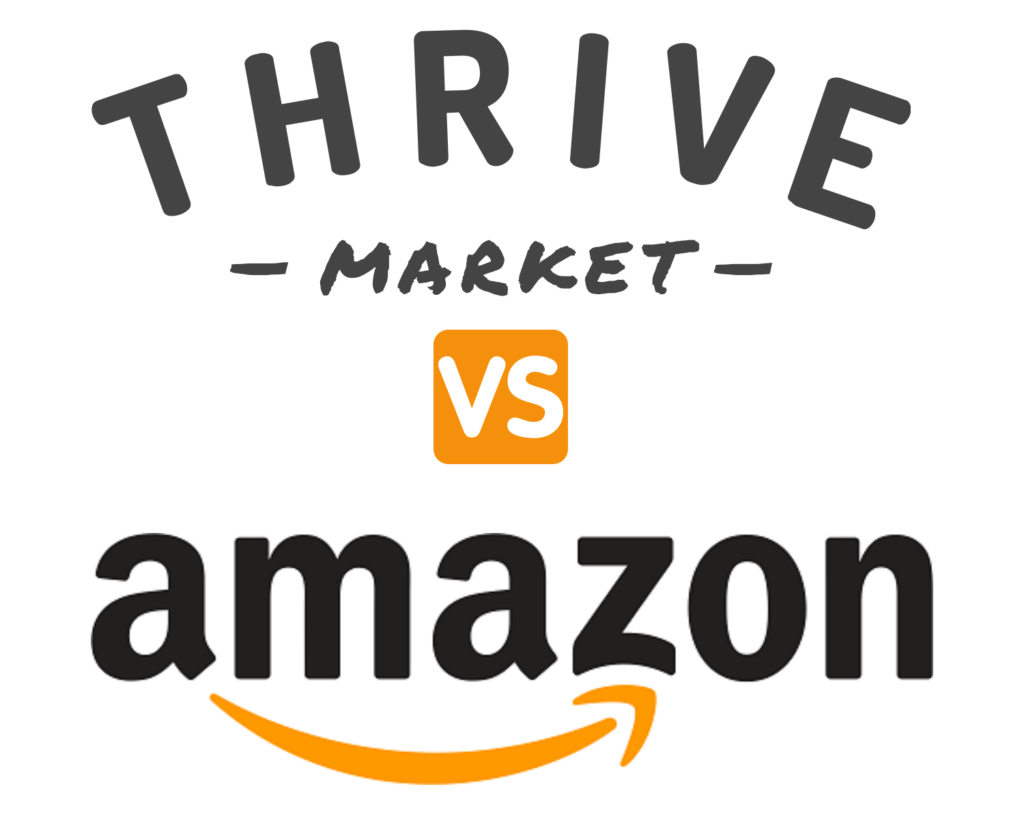
Secondly, there are eComm partners like ThriveMarket and Vitacost, which you may sell through one of your distributors. They provide a basket-building model where individual selling single units does make sense, so are they really any different than any other of your retail accounts? Your major involvement will be around pricing, discounts and promotions – just like your brick-and-mortar partners. So, should your eComm team be responsible for managing these partners?
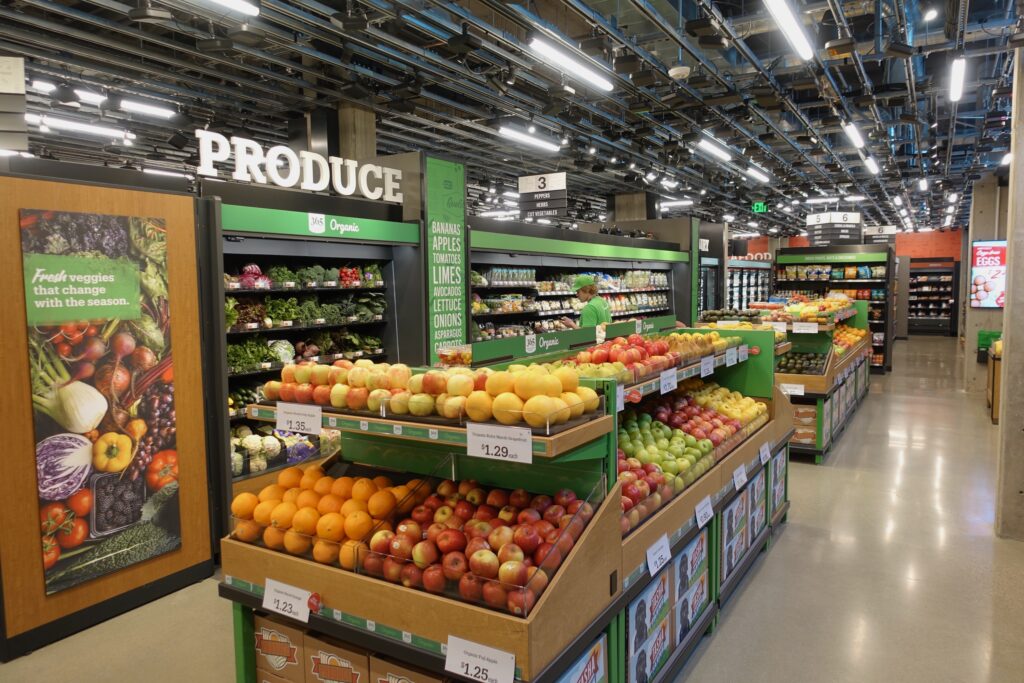
Third, there is eCommerce through Brick-and-Mortar grocery – either click-and-collect or delivery. Often everything about this business is merged with the processes and model of the grocery store itself – rather than a separate buying division, warehouse or operations structure. Promotions and advertising align with what is going on in the store which raises the question: is this a job for your eCommerce team? And to further complicate matters, there are variations on this theme, where a retailer like Walmart will sell some products on their site and the same products in their stores plus some products only through their Third-Party marketplace.
There are also dedicated grocery delivery partners like Fresh Direct, Peapod and Amazon Fresh that purchase product directly from a brand or may use its distributor. Are they eCommerce or simply another grocery account that happens to deliver?
Is your head spinning yet? Because we have a few more questions:
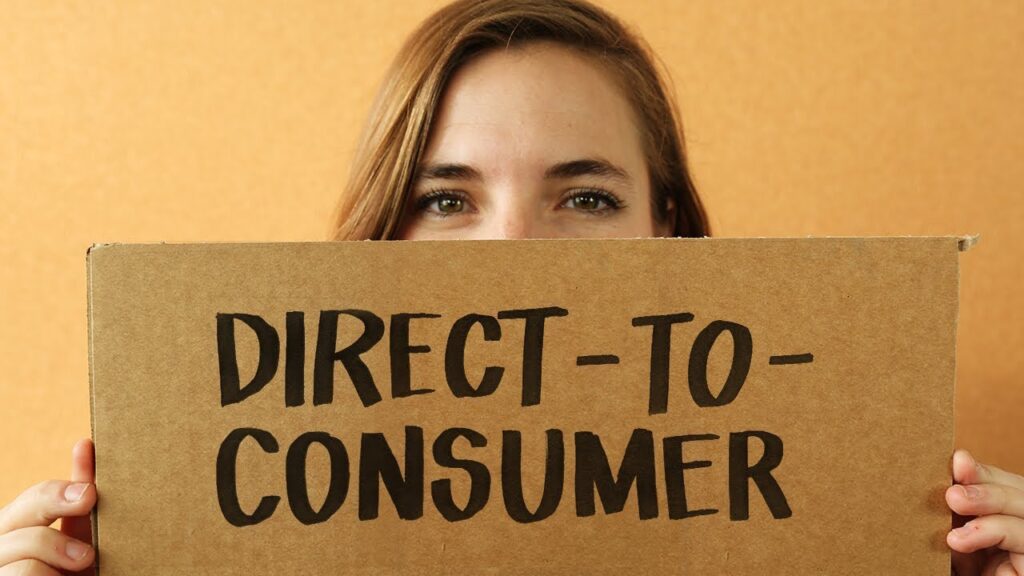
What about your own DTC? Should you sell from your own website (we say yes) and if you do, will you ship your products to your consumer, or use a fulfillment partner? Or fulfill from your Amazon FBA inventory? Do you sell the same products as you sell to other online and brick-and-mortar retail partners or a differentiated set of products? And who in your company manages this completely different model than eComm retail partners
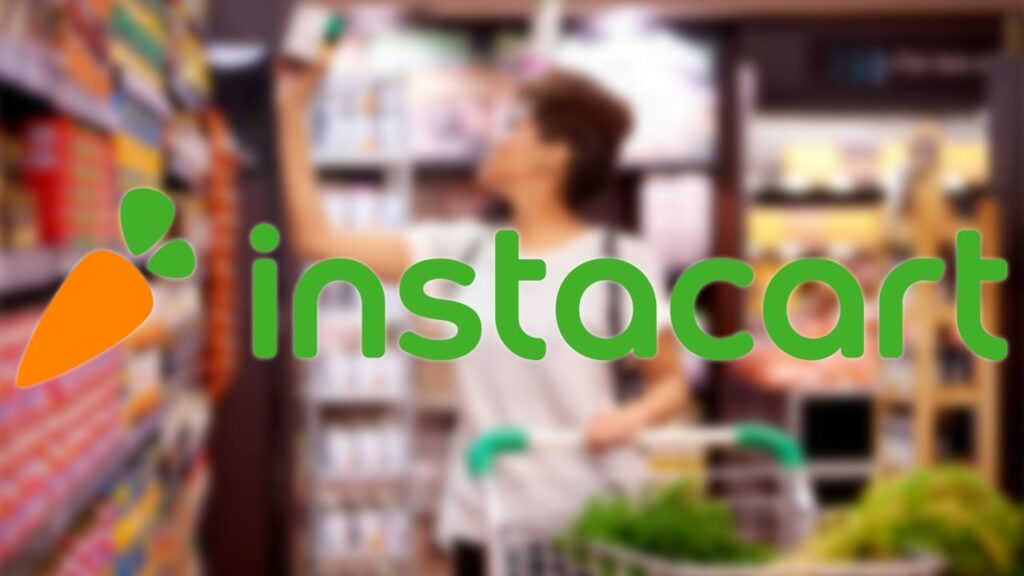
Finally, there’s the “Grubhub of Grocery” – Instacart. They don’t buy or sell anything, but instead, act strictly as a delivery mechanism from grocery stores. But they have instituted features, like coupons and advertising, that can benefit a brand regardless of the retailer the consumer chooses to purchase from. So where does this business live in your company?
All of this is to say it’s time to get serious, figure out how to make this complex opportunity work in your organization, and get in the game. Grocery eComm was already a fast-changing, fast growing channel, and the pandemic crisis has increased that exponentially. Creating an eCommerce team, and putting all these diverse business models on their plate simply won’t cut it. Every brand has to decide if they have the bandwidth to embrace the unique business models listed above, and if they do, figure out how to structure themselves around each one of them.
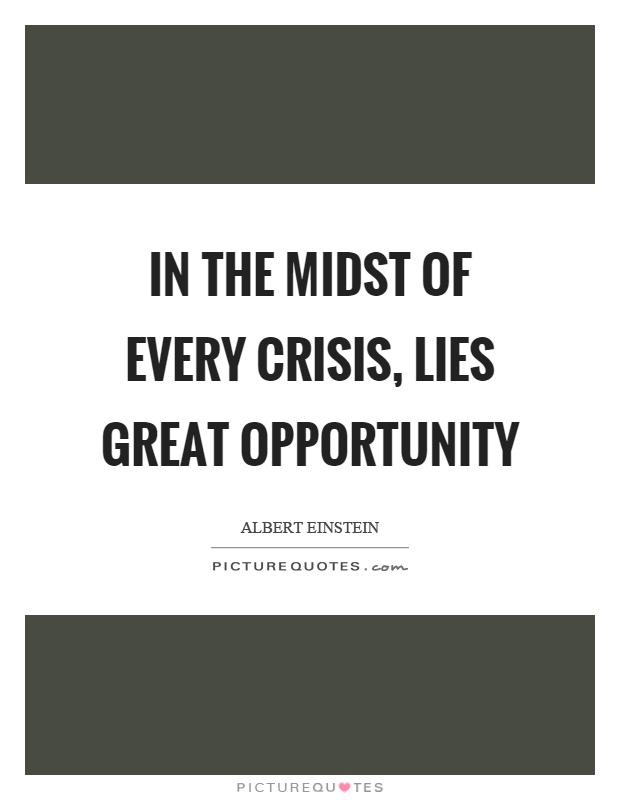
Albert Einstein said, “In the midst of every crisis, lies great opportunity.” And as devastating and painful as the crisis we’re facing now has been for so many people and companies, many of the brands we work with have not only avoided loss, but have been able to able to thrive. By taking time to understand the landscape and doing what it takes to adapt, amidst the chaos, they’ve found their own great opportunity while also providing a great service to their customers.
Written by Betsy McGinn and Bill Sipper
The History Of The Beverage Industry (Part 8) – All Time Commercial Advertising Campaigns
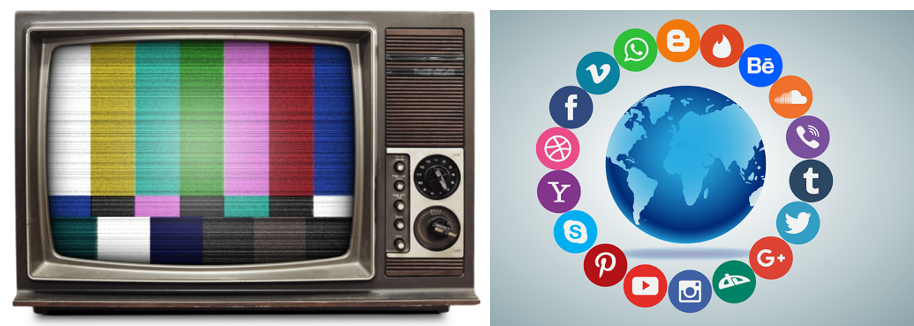
Advertising can be traced back thousands and thousands of years to ancient civilizations. Be it in ancient Egypt, Greece, China or Rome – sharing a message to spread the word to others is a concept as old as time itself. From wall or rock paintings, to papyrus posters, newspapers, billboards, all the way up to radio, television and digital commercials – its transformation is synonymous with the evolution of society.
In terms of its role in capitalist economies, that really took off in the 19th century with the promotion of books, tobacco, automobiles, food, beverages and cosmetics among other things. The concept of creating a campaign around a product to attract and educate consumers started to boom in the early 1900s. Creating a culture, a lifestyle, in which a specific company’s product “embodied” is a concept that, despite its evolution, has been practiced for well over 100 years now. The means in which it is delivered however, has never been more captivating than it is in the modern era.
As televisions became a staple in family homes, so too did commercials. As computers became a staple in family homes, so too did digital ads. These advances in society opened up the capabilities for ads, in a more creative fashion, to captivate a larger audience with slogans, reads and visuals effects that connect with the belief systems of a larger population of people.
Back to the specifics of the food and beverage industry, certain companies have been exponentially more successful in creating a culture through their advertising campaigns (commercial or digital), than others. How do you turn a taste into a visual spectacle? Can you think of any that come to mind? Here’s a good place to start – if you can remember a commercial from over one, two, three or four decades ago, odds are, that company did a pretty good job.
Coca-Cola comes to mind, Pepsi comes to mind, Budweiser comes to mind among many others we will dive into. In this blog, we will take a look at some of the best commercials from the food and beverage industry that have become timeless identifications of a company creating a culture that goes beyond their product.
Coca-Cola vs Pepsi
When it comes to all-time commercials in the beverage industry, it is no surprise two of the industry’s giants produced some of the most memorable. Coca-Cola and Pepsi have set the pace for generations while competing with one another tooth and nail. They battled over product placement in movies, running long ads in the 1950’s 60’s, as well as competing for celebrity endorsements. The two combine to spend over $3 billion on advertisements on an annual basis across their different products. Naturally as industry leaders, many of their ads be it during Super Bowls or around the holidays, have become model templates for how to create a successful campaign.
Let’s look at a few of the best from the core products, that exclude the companies sub products such as Sprite, Mountain Dew, Frito-Lay, 7-Up, Gatorade Powerade, Aquafina, Dasani and Vitamin Water.
I’d Like To Buy The World A Coke – Coca-Cola
I’d Like To Buy The World A Coke to this day is still one of Coca-Cola’s most famous commercials from 1971. It portrayed a positive message of hope and love by a group of teenagers from all different cultures that brought a sense of unity around the product. The song was so popular it later became a full-length song and was a hit record in the U.S. and the UK. Coke has used this ad nearly a dozen times since it’s original airing in 1971 which ran during the Super Bowl. The ad cost approximately $250,000 at that time which was the most expensive commercial in history.
“Hey Kid, Catch!” -Coca-Cola
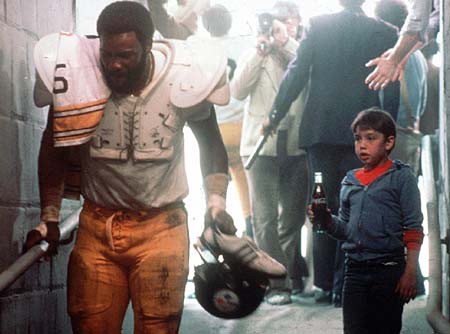
Chances are whether you are a baby boomer or a millennial you know where that line is from. That is the power of a great commercial. That is the power of a message that resonates so deeply within its viewers that it essentially becomes timeless. “Have a Coke and smile” personified by the Pittsburgh Steelers star defensive lineman Mean Joe Green, who didn’t get his nickname for being a happy and nice guy.
Because of his rugged personality, and being that he was probably among the last to show any sort of empathy, especially to a child, the commercial really drove home the message during the 1980 Super Bowl as the hobbled Green gave his game jersey to a kid who gave him his Coke. If Coke can make Mean Joe Green smile, it can make you smile too.
Whole New Generation – Pepsi
As Coke had the leg up on Pepsi during the 70’s, Pepsi Co worked hard to inspire the next generation of Cola drinkers to transition over to their product. To the tune of Michael Jackson’s famous “Billie Jean” the “You’re A Whole New Generation” campaign was born in the 90 second commercial featuring Michael Jackson and his crew along with a younger group of talented dancers, all drinking Pepsi. This 1984 classic also aired during the Super Bowl. Jackson actually suffered burn injuries on the set of making this commercial in a pyrotechnic accident.
Cindy Crawford – Pepsi
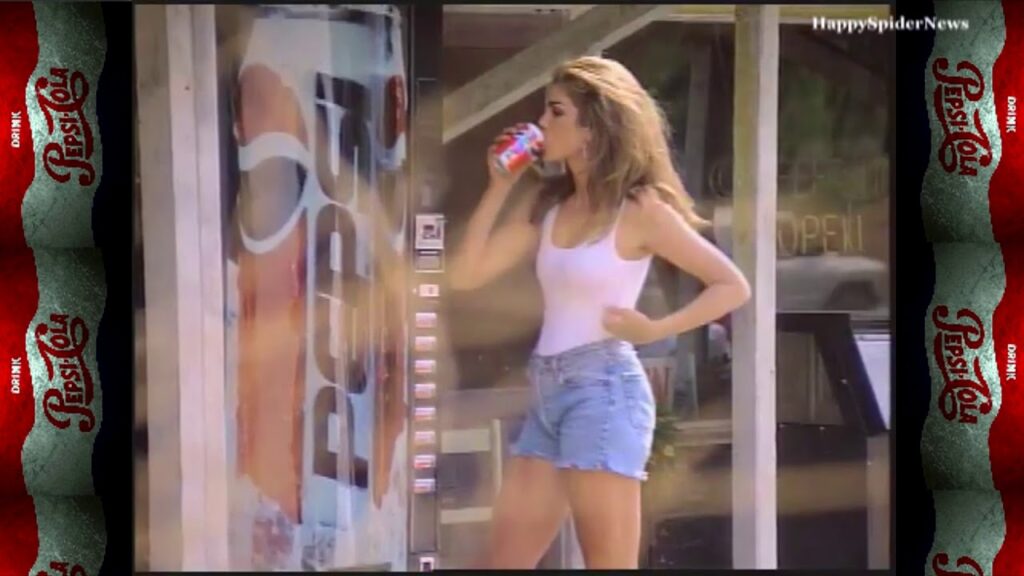
No Pepsi commercial is referenced quite as much as Cindy Crawford’s 1992 moment, in which she does nothing but walk out of a car and drink a Pepsi. Pepsi was featuring a new can in a sexy way with the stunning Crawford who had two poor young boys drooling the entire time. It’s doubtful even an ice cold Pepsi would have quenched their thirst. The commercial was shot to the famous “Just One Look” song by Doris Troy.
Budweiser
No beer company has had more of an effect in advertising than Budweiser over the last century. Their campaigns have successfully hit multiple different demographics, often at the same time. Between their core product, Budweiser, and Bud Light which has grown with the popularity of the light beer sector, none of their competitors have been able to replicate the cultural influence that their campaigns have generated. While their commercials over the last 5 years have been more “light” centric to the younger audience, here are some of the most notable Budweiser commercials in the company’s history.
“Bud – Weis – Er” – Budweiser
Airing during Super Bowl XXIX in 1995, the Budweiser Frogs fittingly named Bud, Weis and Er revolutionized the alcohol advertisement campaign industry with their catchy croak of their respective names shot at “the swamp”. It has been dubbed as one of the greatest Super Bowl commercials of all time and as a result of its success, the american beer company produced several commercials at “the swamp” afterwards, with other animals taking the place of the original frogs. Throughout the 90’s it became a mini series in itself on Super Bowl Sunday as viewers anxiously awaited the new year’s version.
“Whasssssup” – Budweiser
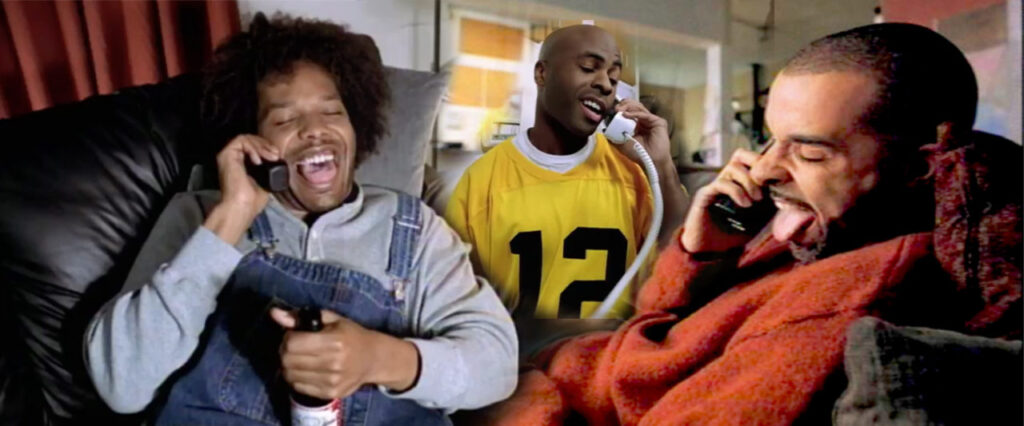
One of the most memorable sayings from the turn of the century, Budweiser single-handedly turned a greeting into a cult icon and pegged it to their drink. It became a cultural saying even among kids which demonstrated the kind of outreach the campaign had. Budweiser’s website traffic had almost tripled as a result of this ad. There were several other renditions that came to follow as a result of its success.
Clydesdales 2002 & Clydesdales 2013 – Budweiser

The Clydesdales have been around since the 1930’s and have been a staple advertising campaign for Budweiser through the decades. These two touching commercials hit home for Americans in the 2002 and 2013 Super Bowls (see the campaign trend here). Respectively, the ads captured the theme of unity, patriotism and brotherhood. Perhaps none more powerful than the ad of 2002 that ran in honor of 9/11.
Other Notable Campaigns
The Most Interesting Man In The World – Dos Equis
“He’s been known to cure narcolepsy just by walking into a room. The Police often question him, just because they find him interesting. His blood smells like cologne. He once had an awkward moment, just to see how it feels.” He is,the most interesting man in the world, and while he doesn’t always drink beer, when he does, he makes it a Dos Equis.
The Most Interesting Man In The World campaign made Dos Equis a desirable product in a time when craft beer was taking over the U.S. and sales on imported beer were dipping. Their campaign broke the norm of other beer companies advertising to a younger audience, where on the contrary they portrayed their product as the sophisticated selection.
Red Bull Gives You Wings – Red Bull
You probably remember some of the first Red Bull commercials made, the famous cartoons that were vital in creating the culture of “Red Bull Gives You Wings”. The commercials early on were nothing extraordinary, at times even a bit corny. It was some variation of a cartoon, someone drinking a Red Bull, growing wings, then flying. So simple yet so effective, the slogan actually led people to believe the product would give them wings. This was later settled in a lawsuit believe it or not as people actually thought they would be able to fly. The effectiveness speaks for itself.
The company has been the most successful energy drink world wide as a result of their marketing campaigns. The commercials have taken a shift towards athletics, specifically in extreme sports, as Red Bull is a major international sponsor for events, teams and athletes. Those campaigns have become known as “The World Of Red Bull” which include powerful sporting footage along with inspiring quotes. Despite the new style, Red Bull still close those campaigns with the catchphrase “Red Bull Gives You Wings” be it verbally or written.
Be A Pepper – Dr. Pepper
Airing in the 1970’s, the David Naughton “Im A Pepper” jingle has been renowned as one of the most catchy jingles in advertising history. “Be A Pepper” was the catchphrase for the minute long ad that even included Popeye the Sailor Man chugging down a Dr. Pepper in place of his regular spinach. The song was written by, at that time, jinglist Barry Manilow.
“Oh Yeah” – Kool Aid
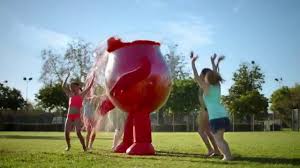
Who didn’t love a Giant pitcher of Kool-Aid crashing through the wall to deliver a thirst quenching beverage? That became the synonymous theme of their commercials over three decades with the giant Kool-Aid man always showing up when children needed a cold drink. Starting in the 1980’s, it is so timeless it has been featured in Family Guy episodes and in a Dane Cook stand up special.
Murder Your Thirst – Liquid Death
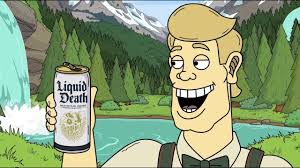
I wanted to include this campaign not only for how incredibly unique it is but to demonstrate a transition the advertising space is seeing now in the digital era, with companies running campaigns on YouTube and other online platforms. Liquid Death is a canned water product we represent, that brings quenching your thirst with water to a whole new level. “Murder Your Thirst” along with “Death To Plastic” are the two flagship slogans.
The brand appeals not only to an ecofriendly approach with their packaging, but additionally to a hardcore artistic audience in a beverage space that is generally thought of as a healthy yet boring. You’d be hard pressed to find a campaign like this airing on television, which is why brands like Liquid Death are utilizing other means to spread the awareness of their products.
Fun Commercials
In effort to include a few more fun videos for you all to enjoy, take a look at these great videos below.
Top Super Bowl Commercials
Top Doritos Commercials
Perrier (1991)
Key Takeaways
There are creative advertisements that stick for a couple hours or become a topic of discussion among friends and family – and then there are creative advertisements that change the way you perceive and remember culture. These advertisements were so well done that they have become iconic, influencing us even till this day, in some cases over 4 decades later. Although they are all unique, the one thing they have in common is their innovation. It pays to be different and to set the trend.
How to Cut a Sound Trail thru the Amazon Thicket
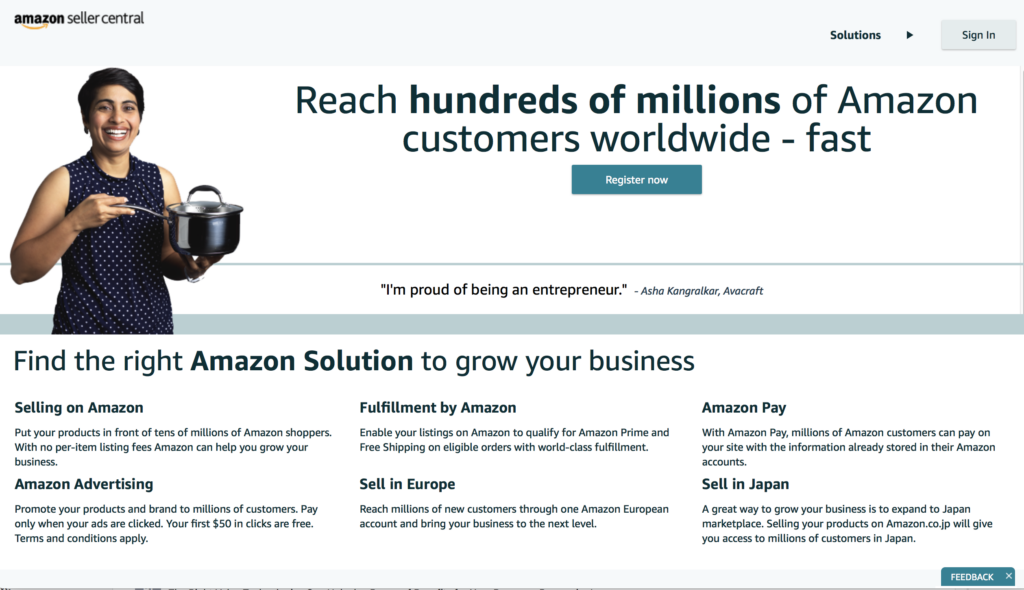
As published in Beverage Business Insights May 11, 2020.
There’s little question that online sales’ continuing inroads in the bev biz have become accelerated as conventional shopping has become more tortuous during the coronavirus pandemic. Data shared on Monster Bev earnings call last week showed that rival Celsius may be still modest at retail but it owns 10% category share on Amazon. BellRing Brands’ ceo said ecomm has jumped to 10% share of sales and may stay that way even post-pandemic. Those are eye-popping stats. Should your early-stage brand make the leap? Does the chaos of the current crisis make this a good time or a bad time do so? Bill Sipper, partner at Cascadia Managing Brands in Ramsey, NJ (CascadiaFoodBev.com), offers a primer here on what factors should go into your decision-making and how to plot your strategy.
“Our vision is to be the earth’s most consumer-centric company; to build a place where people can come to find and discover anything they want to buy online.” That’s Amazon’s mission statement. From a consumer perspective, they have achieved their goal. But what is missing from that mission statement? You, the vendor.
As much as Amazon cares about making consumers happy is as little as they are concerned about their vendors. Amazon can be daunting for even the most experienced food and beverage executive. (It certainly was a learning curve for those of us at Cascadia Managing Brands.) It is even more difficult for an early-stage entrepreneur with limited understanding of their digital space. And as I noted, Amazon doesn’t necessarily work hard to make it easy and intuitive for you. Having been steeped in these issues for our clients in recent years, I’m offering a few guidelines for navigating this challenging but potential rewarding channel.
A word first about timing. Much has been said about Amazon focusing on “essential items” during this pandemic. Yes, food and beverages typically are considered essential, but your early-stage brand may not be so essential at a time many consumers are more focused on staple items. Does this imply you should put off a launch until things settle down? Not necessarily, because of the time frame involved. It will usually take 8 weeks or more to get items listed on the platform. Amazon people are very meticulous and want information the way they want it. For example, quite often Amazon will ask you to prove that you are the brand owner and require specific, and somewhat odd, documentation to support that. It is not uncommon to receive approval to steps in your account only to have them unapproved the following day, as the company requests additional information. So the sooner one starts this process the faster the products will find a berth on the great ship Amazon.
If you decide the time is right to proceed, you first need to determine which Amazon platform is right for your brand. Amazon is not one unitary service. Rather, it offers 3 options, each with its pros and cons: Amazon Vendor Central, Amazon Seller Central Fulfillment by Merchant, and Amazon Seller Central Fulfillment by Vendor. Which platform do you choose? It all depends on your brand’s needs and your operational strength. You need to think this through because success on Amazon starts by choosing the optimal platform.
Product type and packaging are important here. Take ASC Fulfillment by Merchant, in which the order is placed on Amazon but the product is shipped by you, the seller. This is a much better platform for pills and powders, refrigerated products and glass packages (9 out of 10 times Amazon will not ship glass directly). Then there is ASC Fulfillment by Amazon, where you deliver your product to the Amazon distribution centers on consignment and it is shipped to the buyer by Amazon. This most often is better for shelf-stable and RTD food and bevs. Each of these platforms offers different options and opportunities. For example, Vendor Central allows you to participate in Amazon Pantry, Amazon Fresh and Prime Now, while the other platforms do not. ASC FBA automatically gets you a Prime designation while ASC FBM Prime offers that possibility but not a guarantee. This may all sound like gobbledygook to you now, but these are essential, crucial distinctions.
Your digital shelf on Amazon is completely different than your retail shelf. Although you will find some level of uniformity, realistically there is much more flexibility in digital. For example, in traditional brick & mortar you would most probably want to offer each one of your sku’s, sometimes individually, sometimes in multipacks, and sometimes in cases. However, you are limited to the room a retailer allows you on the shelf. The digital shelf is much different. You can offer any pack you want, whether a 3-pack, 4-pack, 6-pack or 12-pack. Variety packs and packs that meet a consumer subscription cadence are the gold standard on Amazon. So this is a key part of your strategizing for this platform. You need to settle on the right size and the right pack count with the right order cadence, and of course make this all work with your supply chain.
Price is also important – but maybe not as important as you might assume. When Amazon shoppers are polled on what’s most important to them, the top three responses tend to be: (1) free shipping, (2) most likely to have the product I want, and (3) better prices. According to Consumer Research Report by Salsify, 2019 69% of consumer will abandon a product page for lack of information or details, a significantly greater driver than price.
Therefore, the content on your digital page (again, think of it as a shelf) is critical, from the type and number of photos, to the titles, to the bullet points. All these things affect your search ranking. Reviews also help in the search rankings and consumers like to see what other people are saying. Focus on getting quality reviews, not quantity.
Last but not least is promotion and advertising. You don’t have an Amazon business without marketing inside Amazon and out. But don’t spend one penny until your content is right. Amazon offers programs ranging from pay-per-click (PPC) to brand sponsorship, product sponsorship and brand store. These need to be combined with search engine optimization and key words on your pages. Yes, it’s a complex matrix, but again, you won’t have a successful Amazon business without thinking these issues through.
I should note that one of the downsides of Amazon is the lack of overall data you will receive about your consumer. Yes, Amazon captures a great deal of data about its shoppers and their purchasing habits, but it doesn’t share much of it. For vendors using Seller Central, the only consumer data you will be able to see is age, household income, education, gender and marital status. Amazon owns the relationship with the consumer. Vendors would receive a lot more consumer data if they sold their products on their own website. But consider this simple bit of arithmetic: Amazon receives 200 million unique views per month, while the average food and beverage startup’s website will receive no more than 50-100 visitors. So do the math. More often than not, even with a lack of consumer data, the sheer consumer volume on the Amazon platform will offer greater sales. Brands would have to spend a considerable amount of money to secure enough views of their website to come close to Amazon’s sales potential. It is a tradeoff that needs to be considered.
If you have a very large brand and if you have a lot of capital to invest in Google search terms and pay-per-click ads, and you have a large database of social media followers, you might opt to sell your product from both your website and Amazon. That could yield incremental sales and capture your consumers’ data directly. However, if you don’t have a large amount of capital (although you still need some to support your Amazon marketing), then it is best to focus on selling your product on Amazon. If you happen to generate sales from your website, that is great. But I would not invest a lot of time there. It is worth noting in this context that Amazon is the #1 search engine for retail products. More than 70% of online consumers begin their product searches with Amazon, versus just 11% with Google. Think about that.
If you’ve read this far, you understand that Amazon can be very difficult to set up if you don’t know what you are doing. It is not as easy as just throwing some photos and words on a page. Today, many brands launch exclusively on Amazon because the barrier to entry and costs are relatively low compared to the requirements of operating in the bricks-&-mortar world, from recruiting distributors to paying slotting fees to running in-store demos. Amazon sold $8.2 billion of grocery items in the US last year (compared to Walmart’s online business of just $2.4 billion). It can be a great place both for large brands and small ones. But only if you have a plan.
So you Want To Launch A Brand? Why You Should Start Now
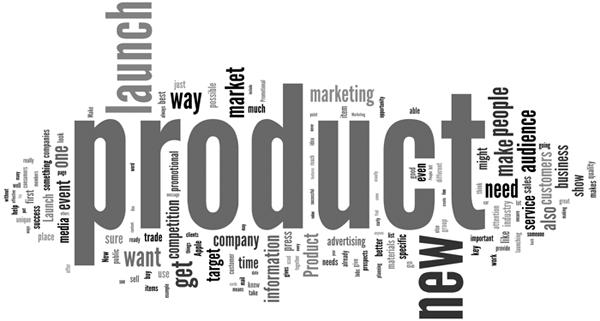
I started writing an article showing the steps and timeline for creating a new food and beverage brand. I wrote more than I expected so I decided to post the article in bite size pieces here on a bi-weekly basis.
The pandemic, amongst other things, has caused many entrepreneurs to pause and re-think their strategy. Many entrepreneurs who have great new food and beverage ideas are waiting to see what happens. I can say, that is a very bad strategy for entrepreneurs because while they wait, others will be moving forward and will be the first to gain shelf space when the country goes back to our new normal.
Let’s look at a typical timeline for a new food or beverage item. For arguments sake, let say you already have an idea in your head. What do you do next?
Research and Development
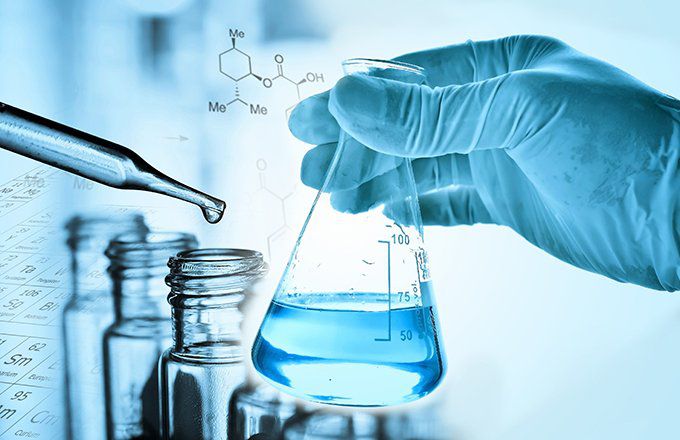
Let’s start with research and development. You might be able to create your product in your kitchen today but it will be much difficult once you move to the production phase. For a very basic example, let’s say you are using Heinz ketchup as an ingredient. If you were to order Heinz ketchup in a 50-gallon drum, the minimum size you can usually order for a production run, it would be very expensive. Depending on how much you use, Heinz Ketchup may make your product too expensive to sell or too expensive to make a profit. Heinz ketchup has a certain taste profile. When you move into production you will most probably need to buy a less expensive but high-quality ketchup. Where do you go for that? How do you sample the different types of ketchup being sold in bulk? Will the manufactures send you free samples if you are a startup?
This all leads up to you probably should hire a person or company, like Parkside Beverage, Beyond Brands, or Metabrand amongst other reputable firms. Get your recipe or formula done right the first time. In the grand scheme of things their fees are not a lot of money and you need to get it right the first time. Re-formulating takes time and money.
I have been on the floor of production facilities with clients who created their own recipes and were trying to adjust the formula on a fly. It was a disaster. I remember one time being on the production line when someone’s formula would not work because the ingredients were too thick and they were clogging the filters. That costs a lot of money. The client had to pay for the entire day of production even though he/she was never actually able to produce their product. My advice, stick with the professionals and they will save you a lot of money in the long run.
Now let’s look at the timing and timeline. Formulation companies aren’t waiting for new entrepreneurs to contact them. Even during these Covid 19 times, reputable formulation companies are still busy. They point is you can’t just pick up the phone and expect them to get started immediately. It might take two weeks until they can accept your business. It might take them time to order special ingredients.
Once they create the first batch of samples for you, and I am sure this will not be the last batch of samples, and you consider the time it takes for them to mail you the samples, and the time it takes for you to review the samples and send comments back to the formulator, and they eventually finalize the formula, consider 4 more weeks go by.
Now you have your formula. Great start. Do you want it to be GMO free? Organic? Kosher? These processes take time and someone has to fill out all the paperwork and get all the information for the certifier. My last go around with a GMO-Free certifier took 6 months because they are backed up. However, let’s say it takes 3 months. However, assume you can work on other parts of your product during that time period.
Shelf Testing
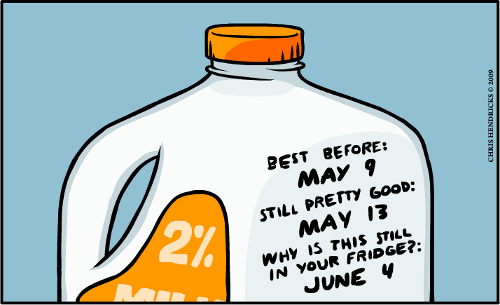
Let’s consider the next step being Shelf Testing. Before you produce your product, you want to know what happens to your product after being exposed to different levels of heat, cold, light, etc. Are any bacteria growing? What about yeast, pH, mold, salmonella, E. Coli, listeria, staph, aureus etc.? How long will your product be on the shelf before the color or taste or aroma begin to change? And this isn’t just a “nice to have”. Retailers and Distributors may request to see the shelf life test results.
According to RL Food Testing Lab, Product Safety Testing will take different times depending on the type of item you are testing.
Here are a few examples:
- Beef Jerky 9 months – 1 year
- BBQ Sauces 4 months – 6 months
- Pasteurized Dairy Products: 3 weeks
- Raw Juices 5 days
- Cakes, Cookies & Other Bakery Goods WITH preservatives 30 days
- Salsa 3 months – 4 months
But now, you need to test for shelf life. How long will your product last before going bad or before losing taste, aroma or even color?
The rule of thumb regarding shelf life testing, depending on the product, is that a product needs 1 week of testing for every month of shelf life you are looking for. But, that timeline may be a little bit over cautious. For the sake of this article, let’s say it takes you 90-120 days until you get your test results.
Cascadia Managing Brands is a strategy, brand management and sales execution firm that helps startups succeed. In this bi-weekly series Bill Sipper, Managing partner, shares his insights on:
Product Formulation
Certifications & Testing
Future articles will discuss:
Brand Positioning and Logo and Label Development
Intellectual Property and FDA Compliance
Point of Sale Material and Presentation
Liability Insurance
Distribution Strategy
Sales Execution
Overall Timeline
The Great Recycling Con Job?
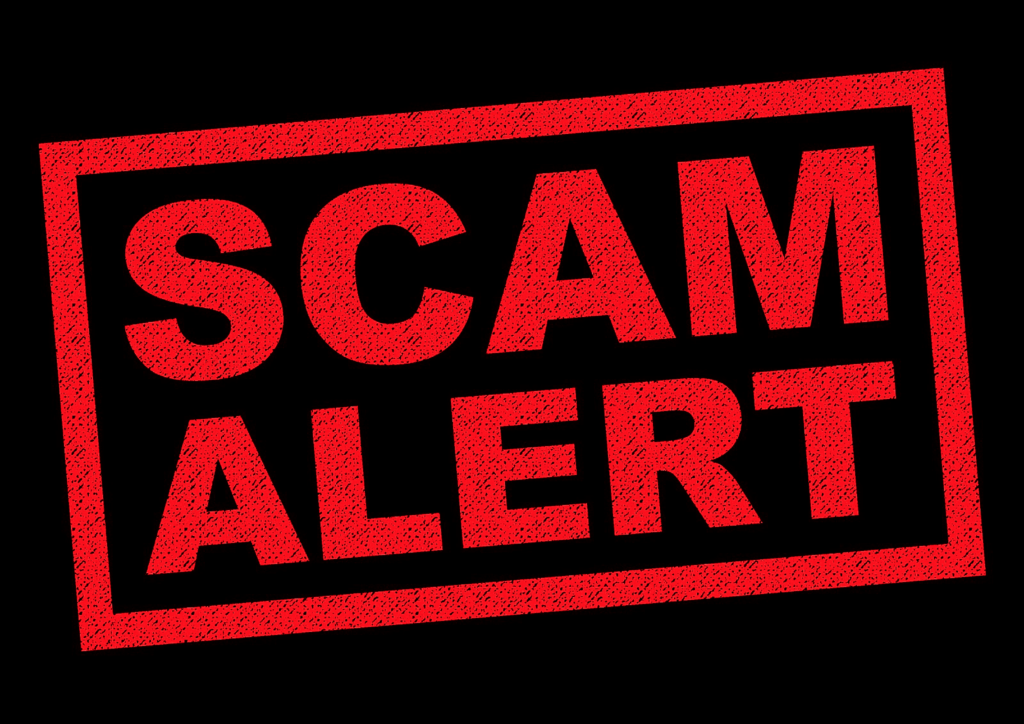
We are all today brought up with the belief that recycling is important. Experts, people of power, and organizations constantly tell us that recycling is vital if we want to ‘save the planet.’ However, the reality is far more complex, and there’s a lot more to it than you might think.
First of all, when we’re environmentally conscious, we are not only saving the planet, we are saving ourselves. It’s presumptuous to think that any of our individual actions can destroy or save the planet on a global level. We are just one living organism among a whole host of living organisms on Earth that has occupied it for millions of years. They all came and went, and the planet is still here. We are a mere second in the entire existence of the world.
In essence, all the bad we do to the planet will only lead to our own extinction, and the Earth will continue to exist long after our demise.
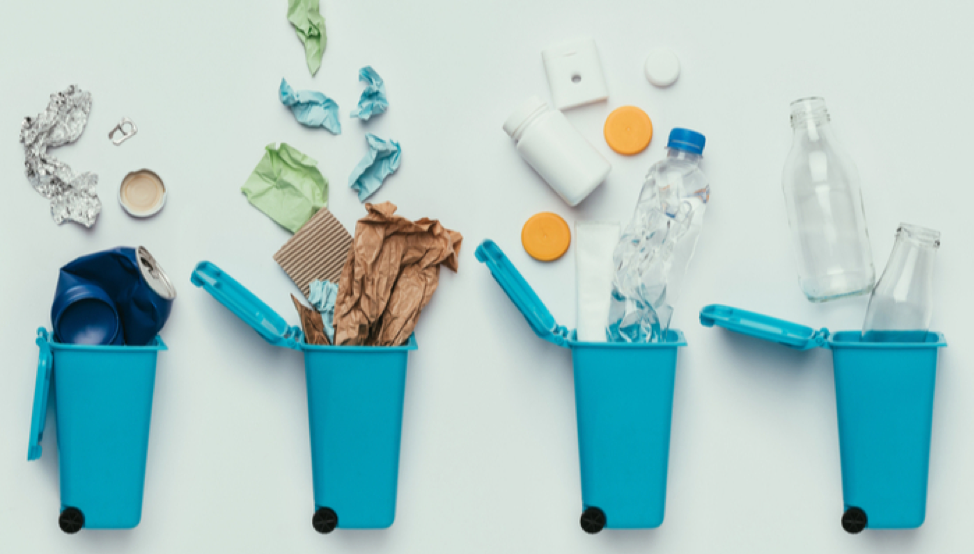
But besides the fact that we are not saving the planet when we recycle, we are also not really recycling. At least not in the way we are told. You want to know why? It’s a long story, but by the end of this post, you’ll know the real truth about recycling – the one no one will tell you.
Before we begin, you have to understand how recycling works in this day and age. Let’s begin:
How Recycling Works
Recycling has been around for long enough that the very word has come to symbolize one thing – turning something that is no longer useful anymore into something new instead of throwing it away. But how does the recycling process work exactly?
We, regular citizens, throw our recyclable waste into the eponymous blue bin instead of the regular garbage can. A recycling truck comes and picks up the recyclable waste we throw away. The truck then takes the garbage to the recycling plant. There, a very complicated process happens through which all of that garbage is turned into raw materials that can then be turned into something completely new.
Naturally, the process is not endless. Every recyclable product is usually down-cycled, which means that the new product can never be the same as the original. For example, when old newspapers are recycled, the paper will still contain residue ink, and the fibers within the paper will be much shorter and weaker. For that reason, the recycled material won’t be as desirable for the same product, but it can still be used for something else. The same thing happens with most other products. And after a couple of rounds through the recycling processes, the material will reach a point where it will no longer be usable. So, returning to our example of paper, after it’s been recycled repeatedly, the paper will no longer be usable and can only be discarded.
However, that doesn’t mean that some products can’t be up-cycled, because they can. By being smart, we can turn certain products into even better ones. For example, one could make a whole furniture piece out of old plastic or aluminum cans and a bunch of newspapers. Even old wood can be reused to create something new and equally beautiful. However, in the majority of cases, products are only down-cycled and eventually become unusable.
So, is that the truth about recycling? Well, yes, but there is still more to it. This is just a lesser-known fact about recycling, but there is still the big truth that will completely alter your opinion on recycling.
What the Companies Don’t Want You to Know About Recycling
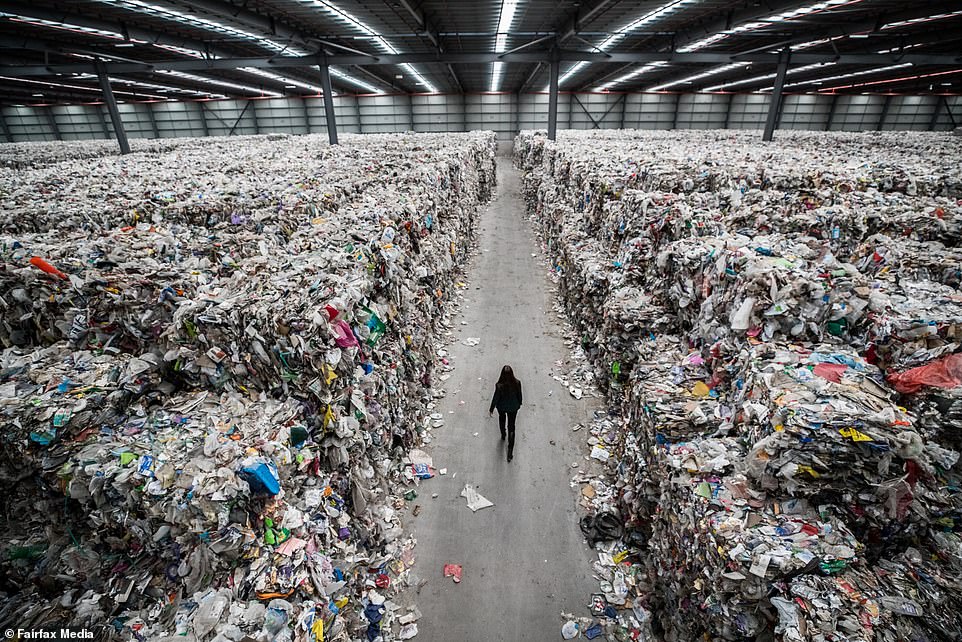
As it turns out, there is a lot that companies aren’t saying. It’s as if they are covering up the big truth, or several of them. The biggest one is the fact that not all plastic is recyclable. This is important because the biggest polluter among the waste we create is plastic. The main reason for this is the amount of plastic we create and how long it takes for it to decompose.
For example, it takes only two weeks for paper to decompose, which is why paper garbage is not a big problem in the world. The real problem is the amount of trees we chop down to make it. But I digress. Organic waste decomposes fairly quickly as well, from a few weeks to a couple of months. The real problem is the materials that take very long to decompose. For instance, nylon fabric takes up to 40 years to decompose, while rubber takes as much as 80 years.
But all of these relatively common products are nothing in comparison to plastic. It takes plastic a whopping 450 years to decompose! Once you take into account that plastic was invented in 1907, you quickly realize that none of the plastic that has ever been produced has decomposed by now. All of it is still here. And do you know how much of it? The latest study from 2017 states that 91% of all plastic never gets recycled. That’s around 8.3 billion metric tons of plastic, and all of it is now waste. What’s more, only 12% of all the plastic that has ever been made has been incinerated. The rest of it is polluting our land and the world’s oceans.
According to National Geographic, A whopping 91% of plastic isn’t recycled, even though we put them in those blue bins! Many mixed plastic and paper cartons (Tetra Pak for example) do not get recycled, contributing to 78 million tons of packaging waste in U.S. landfills as of 2015.
To an extent, this is our fault. But mostly, it is the fault of the brands that create plastic products. For example, Coca Cola has recently been named as the world’s biggest plastic polluter for 2019 – again. An audit that was conducted by Break Free From Plastic, an environmental justice group, has shown that Coca Cola makes 43% of all plastic waste. Nestle and then Pepsi follow Coca Cola as the world’s biggest plastic polluters.
The problem with all of this is that not even the previously mentioned 450-year mark is certain. We don’t know for sure how long it takes for plastic to decompose as none of it has existed long enough to decompose. Therefore, 450 years is just an estimate.
Now, most of us believe that we are doing good when we recycle plastic. So, in essence, if all of us were to start recycling, there will be no plastic waste in the world, right? Well, that’s very wrong. Remember what we said before? The part that mentioned that not all plastic is recyclable? We were talking about the plastic that’s put in the blue bins – the one that’s recyclable according to their label. As it turns out, out of the seven types of plastic that are ‘recyclable’, five of them hardly get recycled at all. According to the Environmental Protection Agency (EPA), out of all the plastic that was put up for recycling in 2017, only 8.4% of it was ultimately recycled. The other 91.6% went to the many landfills and into the ocean. The same report from the EPA states that, on average, 50% of all other waste is usually recycled. So yes, the biggest issue is plastic.
If you think this is already very bad, you will be surprised to know that it used to be better, at least for the United States. It seems that the US used to send about 20 million tons of garbage to China, and they were the ones who were supposed to deal with it. But in the end, they decided that they were not going to do our recycling for us. The same happened in the Philippines and Malaysia. As it turns out, these countries began to have their own environmental issues when it comes to waste. Now, many states or counties in the US don’t even have good recycling programs anymore because of this.
This brings us to the second big truth.
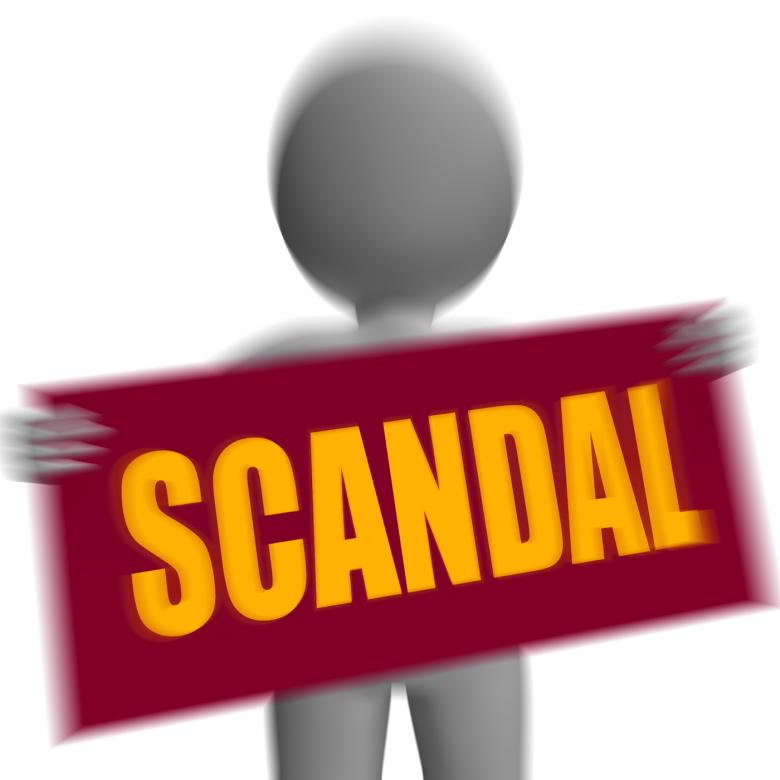
What the FTC Doesn’t Want You to Know About Recycling
The second big truth about recycling involves the FTC or the Federal Trade Commission. As you are probably already aware, most products we buy have that small green triangle symbol that denotes that the packaging is recyclable.
The FTC is the one that allows companies to put this symbol on their packaging. With that in mind, you would expect the commission to have some specific and strict rules which force the companies to create fully recyclable packaging. But alas, that’s as far from the truth as one could get.
The rules and guidelines set by the FTC are very complicated, so I won’t get into them as I don’t even understand them entirely. But what I do get and what it all boils down to is that companies can find many loopholes and vague rules that allow them to put the little triangular symbol on almost anything. And what ends up happening is that a significant portion of the products that boast that symbol still don’t get recycled in the end.
The best example of this is the famous Tetra Pak packaging that’s widely used across the globe, not just in America. As it turns out, Tetra Pak is not as recyclable as we are led to believe. According to the regulations set by the FTC, it is recyclable, but according to common sense, it’s not. That’s because the process used to recycle Tetra Pak is overly complicated and rarely used. Plus, parts of the Tetra Pak don’t get recycled. The result is that a lot of the Tetra Pak packages end up in landfills or the ocean as not all of it is recycled.
Paper, plastic, and aluminum are layered together to make cartons: A typical shelf-stable carton averages 74 percent paper, 22 percent plastic, and 4 percent aluminum. A familiar form of this packaging is unrefrigerated soup or wine cartons.
Refrigerated cartons skip the aluminum and usually contain an 80 percent paper and 20 percent plastic combination to hold in the liquid. The Carton Council of Canada provides extensive information about the composition of different types of cartons and their recyclability.
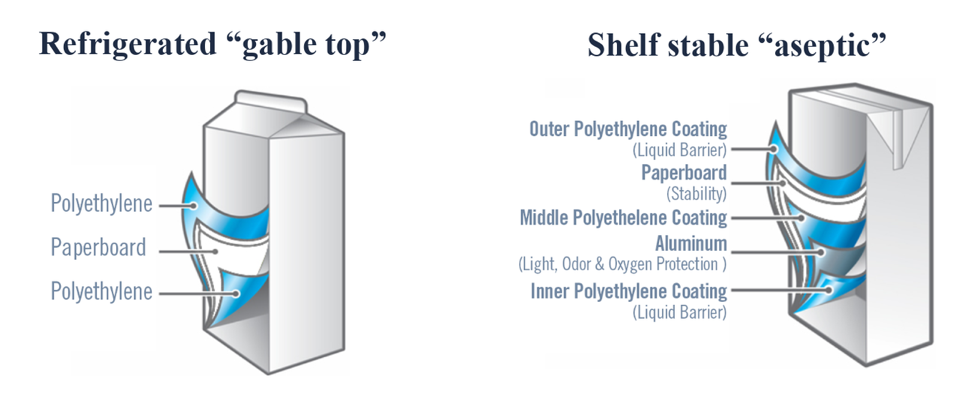
Source: Carton Council
Tetra Pak is just one example. Many other products are allowed to have recyclable labels on them, and yet they rarely end up being recycled. Even though that’s the case, the companies that create these products want us to believe that recycling is good and vital for us. By doing that, they keep us wanting to buy their products. Because for as long as we are incredibly eco-friendly, we will continue to purchase their products, knowing that what we throw them in the big blue bin will that will send them to the recycling plants. It’s a win-win situation, the companies make money, and we are all eco-friendly in the end. But, as you can see, we aren’t, not really.
So, if so much of the garbage we make ends up in a landfill or the ocean, is there even a point to recycling? Yes, there is.
Key Takeaways
Even though the big truth is that so little of what’s supposed to be recycled ends up being recycled, it’s still vital for us to keep recycling our waste. None of this changes the fact that a lot of the garbage we create ends up in the recycling plant. And even though a large portion of it doesn’t, that shouldn’t mean we should stop trying altogether. The little effort we make still means something. And it’s not like we can stop buying everything just because we know it might not get recycled.
What we really need is for the FTC to start making better rules. We need those guidelines to be stricter so that companies are forced to create products that will always end up recycled. We also need them to enforce real penalties and impose massive fees for those that don’t follow the guidelines.
However, we also need companies to start finding ways to deal with the plastic and other waste they create that ends up in the landfills and oceans. They are the ones causing the biggest problem with the waste crisis we have today.
We also need consumers to buy less plastic. Switch to cans and glass whenever you can. Almost everything you can buy in plastic is available in glass or cans. Ask your retailer to purchase more can and glass beverages. You have responsibility too.
I feel that the first step towards real change is for all of us to learn the whole truth. Once we do, we can start spreading it. The more people who know the truth and react to it, the more the government and the companies can work towards fixing the mess they created.
In the meantime, you should keep following my blog because more stories like this one are going to follow!
The History of the Beverage Industry (Part 4): How Bottled Water Changed the Industry
Bottled Water History
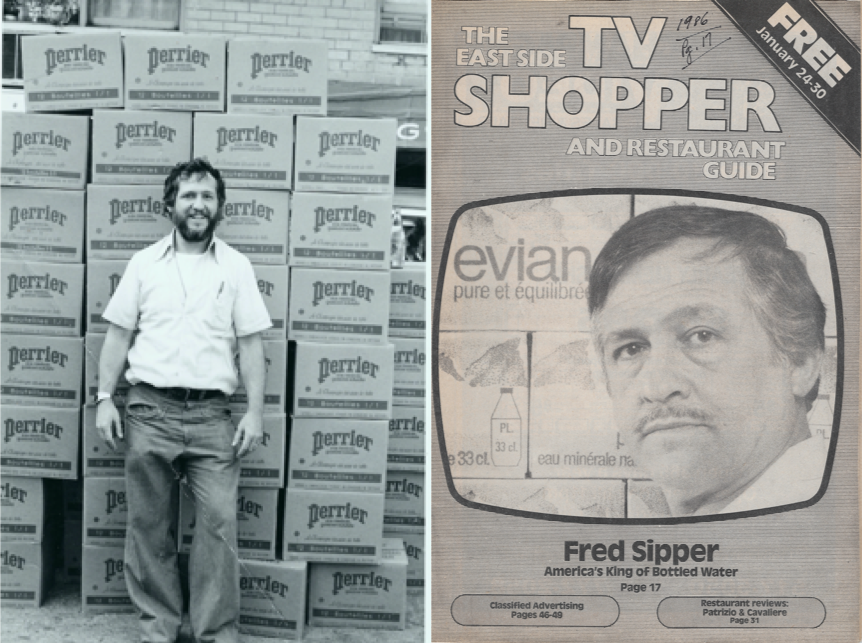
What about Bottled Water?
Unlike sports drinks, bottled water has a much longer history. Even though we humans started transporting water in vessels since the dawn of the first civilizations, bottling of it started much later in the early 17th century. The craze for bottled water in the United States started much later, though, in the 1970s.
In 1621, the first bottling of water began at the Holy Well in the United Kingdom. It was a humble beginning in one bottling plant. That doesn’t exist anymore, but the Malvern water from the springs in this area is still bottled to this day.
The practice started in the UK, then spread across Europe and subsequently to North America during the 1700s. The method gained in popularity as natural springs are believed to have many healing properties. Even though it was popular, bottled water only started being commercially distributed in 1767 by Jackson’s Spa in Boston. All the while, bottled water was mostly created and sold as a medicinal remedy by pharmacists.
In the 1800s, technological innovations allowed for some improvements to the practice. These mostly consisted of cheaper glass bottles and significantly faster bottling. Thanks to this, bottled water grew in popularity even more.
The popularity of bottled water in the 20th Century somewhat declined, especially in the US. This was mostly due to the invention of water chlorination, which reduced the dangers of drinking water available from the public supply. However, bottled water still persisted in Europe, and in the 1970s, became popular again.
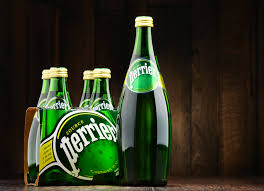
In the mid to late 1970s Perrier managed to position itself as the ‘Earth’s First Soft Drink’, thanks to Bruce Nevens and James Stevens, the first US CEO and VP Marketing respectively (and later the inventors of Chipwich Ice Cream Sandwiches). Perrier started bottled water’s commercial dominance. Perrier is now known throughout the world for its high level of carbonation and especially for its distinctive green bottle. It’s now owned by Nestlé.
But back in the day, a retailer named Fred Sipper, whom Smithsonian Magazine once called the “King of Bottled Water”, started selling Perrier in his small grocery store in New York City in 1960 called Irving’s Food Center. At the time, though what was to become a revolutionary idea, started out as a ploy to attract more consumers to his supermarket. Irving’s Food Center had a lot of European customers, especially French clientele, and his tactic worked.
Fred first purchased cases at a time. Then he started running full page advertisements in The New York Times to promote Perrier and Irving’s Food Center. He began purchasing and selling pallets of Perrier and then overseas containers from France. Unfortunately, the grocery store was too small to handle that type of volume and he opened a warehouse and a new wholesale distribution company called Mootch and Muck, affectionately named after his parents’ nicknames for one another.
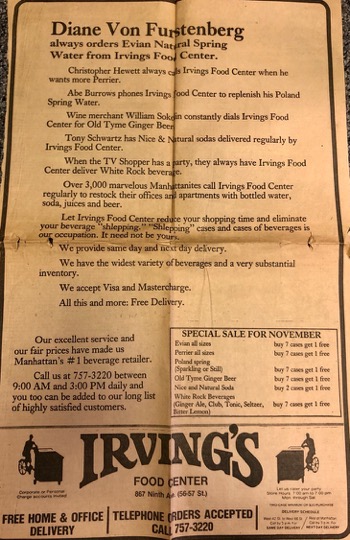
Bruce Nevens and Jim Stevens were great marketers, constantly looking to cater to the upscale NYC clubs, restaurants, and hotels, etc.
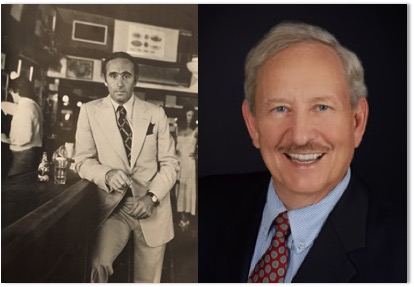
The business grew and Fred added other bottled water brands including Evian, San Pellegrino, Poland Spring, Mountain Valley, Aqua Panna, Contrexevelle, Badoit, Apollinaris, Gerolsteiner, Ferrarelle (to be re-launched in the United States by Evian in 2020) and many more. He eventually convinced the major and many minor retailers, as well as the trendy restaurants and clubs to sell the first bottled waters in New York and New Jersey.
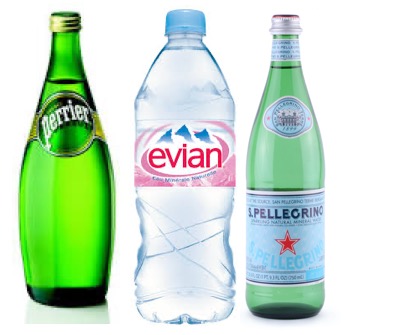
Fred opened his first warehouse to distribute bottled water in the mid 1970s. The first warehouse was 1000 square feet and housed mostly Perrier. The second warehouse opened in 1982 and was 35,000 square feet; the next a 60,000 square foot warehouse on Grand Avenue, and then 100,000 square feet in 1985 in Williamsburg, Brooklyn.
From 1976-1988 Fred was the exclusive Evian distributor for the NY ADI. Mootch and Much was also the first Vitamin Water distributor and shared the exclusive distribution rights to San Pellegrino with a food service distributor.
In came Jack Maguire, a savvy former Vice President of Canada Dry, and the first CEO of Evian USA, then called Great Waters of France. Jack was a great marketer and teamed up with Fred to create the largest bottled water empire in the USA for many years. In fact, Fred and Jack participated and sponsored the NYC Marathon and catered at first to runners. Both would run in Central Park at mid-day together to train for the event in pink Evian shirts and sweats, and of course always with a bottle of glass Evian, there was no plastic at that time in their hands.
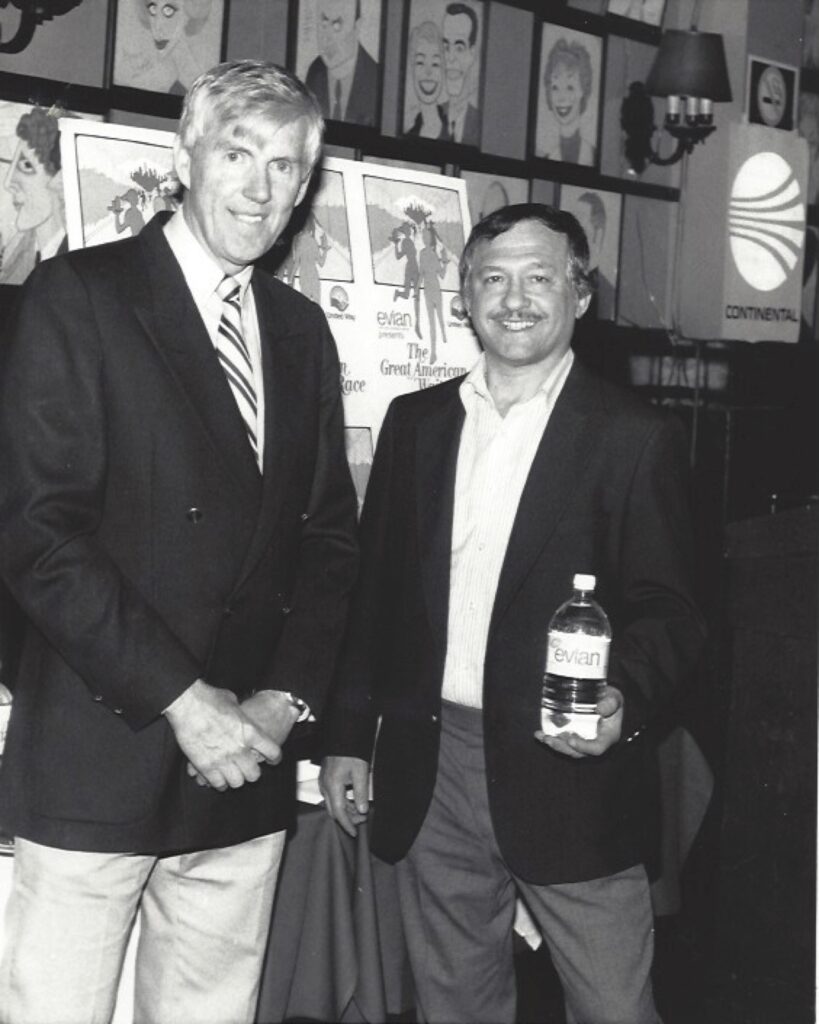
Fred developed the first bottled water program where he would visit the swankiest upscale restaurants, hotels, and clubs in Manhattan. His first questions was, “how much money do you make on the free bread you give out? What about the free tap water you serve with ice that you pay for?” They soon began to realize that a bottle of Evian at the table could add 15% to their checks. Fred would also interview the wait staff and initiate his Evian Waiter Program which consisted of training the waiter to convince their customers to buy Evian so that their tips would increase by at least $1.00 per client, if their customer only bought one bottle.
He made an arrangement to meet with all the waiters and outlined his program: 1) When the customer sat down, there would be a bottle of Evian on every table. 2) No glasses of tap water were visible. 3) and if they convinced the client to buy the Evian their tips went up. Since the average waiter would wait on more than 30 tables per night, he or she would earn an extra $30 per night.
He also advised them about the Evian Mystery who would unknowingly have dinner in their restaurant during a defined period of time. If the waiter even mentioned Evian, the waiter would receive $100 on the spot.
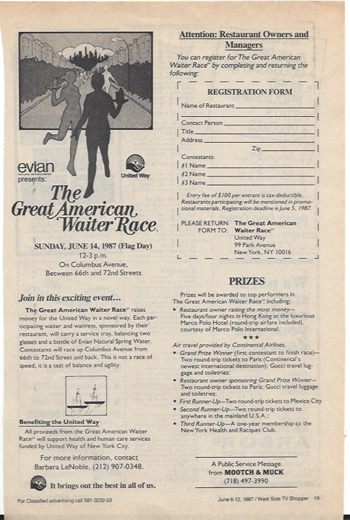
Simultaneously, he convinced chain store buyers to create the first bottled water sections in their stores. He offered a free fill for every inch of space they gave them. And if the product didn’t sell, at the end of the month he promised to purchase any unsold merchandise at full retail price. The result: He never had to buy back any bottles.
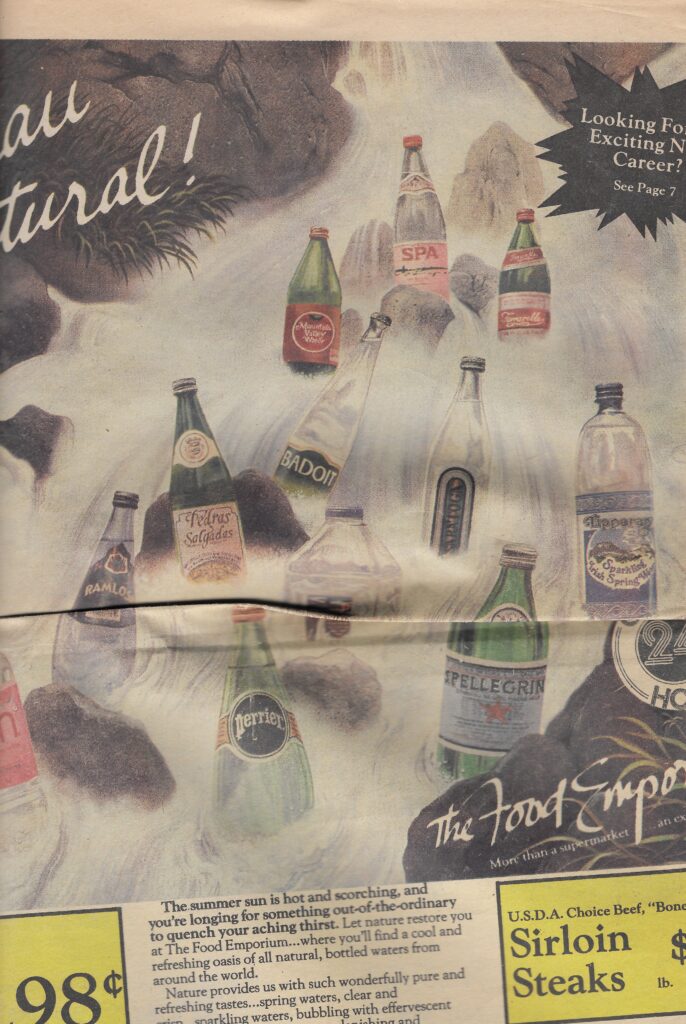
worked with Fred to launch their Bottled Water Spectacular, a one week bottled water promotion four times per year
Fred and Jack convinced Marvin Taub at Bloomingdales to display Evian in their stores and sample consumers in high end departments like fur and expensive women’s clothing. Taub wanted a 60 day exclusive when the plastic Evian bottle was introduced. The three parties agreed and then Fred pre-sold all of the city’s supermarket chains leveraging the distribution in Bloomingdales.
To this day and since 2000, Fred consults for the second largest online distributor, second only to Amazon, of non alcoholic beverages, Beverageuniverse.com. He still seeks new bottled waters daily to add to the 290+ kinds and sizes Beverage Universe stocks.
But I digress…and it is time to re-focus on the earlier history.
The Origins of Schweppes and Carbonated Bottled Water
One would think that this is all there is to bottled water, but there’s more to it. In 1783, a Geneva man called Johann Jacob Schweppe developed a process for the manufacturing of bottled and carbonated mineral water. He also founded the now-known Schweppes company that started selling his carbonated water.
This changed the game for the bottled water industry. It was the first time people came into contact with soda water, sparkling water, or seltzer water as we know it in the United States.
Even though Schweppes started the bottling of carbonated water, that water itself had been accidentally developed by Joseph Priestley some 16 years earlier. He discovered that it was possible to imbue water with carbon dioxide. He drank his concoction and later wrote about the unusual satisfaction he gained from drinking it.
Later on, in 1809, bottled carbonated water started gaining popularity in the US as well. Joseph Hawkins got a patent for producing imitation mineral water. As the decades passed, bottles of carbonated water were being sold in the millions.
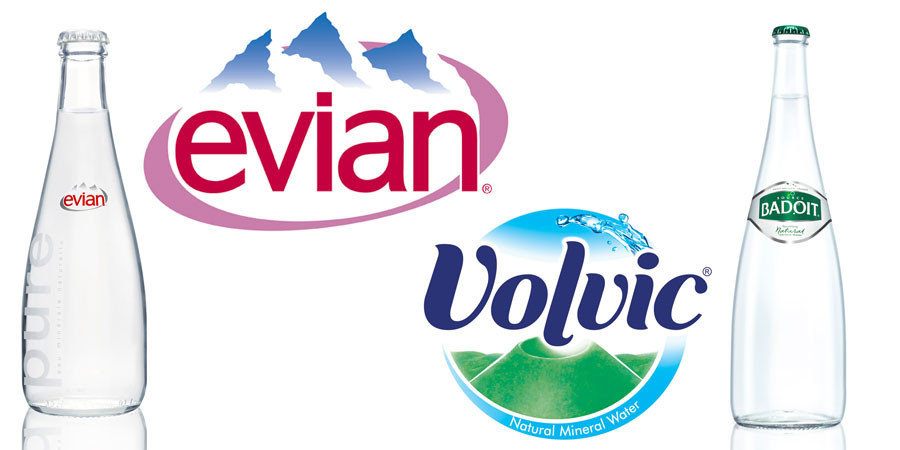
Bottled Water Market and Its Effects
In the 1970’s few people knew about bottled water. However, they started to buy it in droves as negative reports about US water supply surfaced and trendy discos like Studio 54 and restaurants like Elaine’s and clubs like Regines started selling Perrier.
After Perrier took the market by storm, Mootch and Muck added San Pellegrino and Evian to its distribution trucks to build all 3 bottled water brands in the Metro New York area. Poland Spring soon joined along with Calistoga, Arrowhead, Badoit, SPA, and other pioneers.
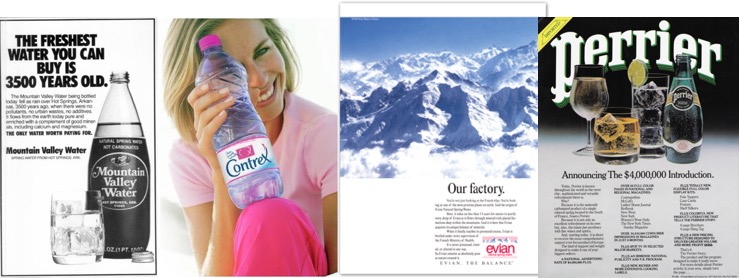
More and more consumers switched from Perrier to non-sparkling waters like Evian and their usage occasions increased. Evian was in fact the first bottled water company to introduce their products in plastic bottles. Once this occurred the bottled water industry exploded. Competitors followed suit using plastic bottles. And sales have continued to increase for every year since the late 1970s.
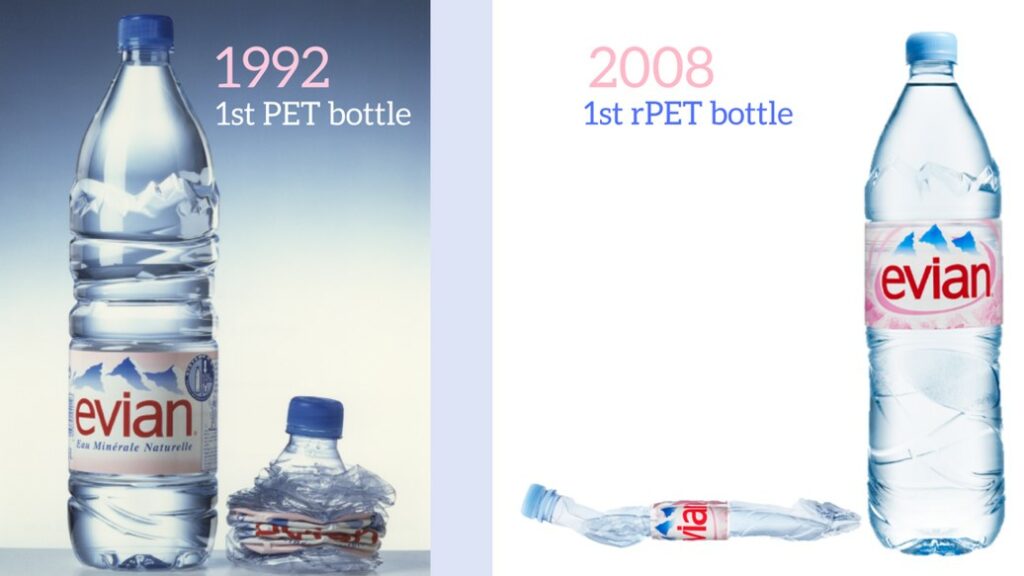
Today, centuries after the first bottled water was produced, the entire market is worth around $200 billion and is expected to reach $330 billion by 2023. The enormous growth of the market is being spearheaded by many conglomerates bottling and selling mineral water and carbonated water, thus easing public concerns across the globe about the safety of tap water.
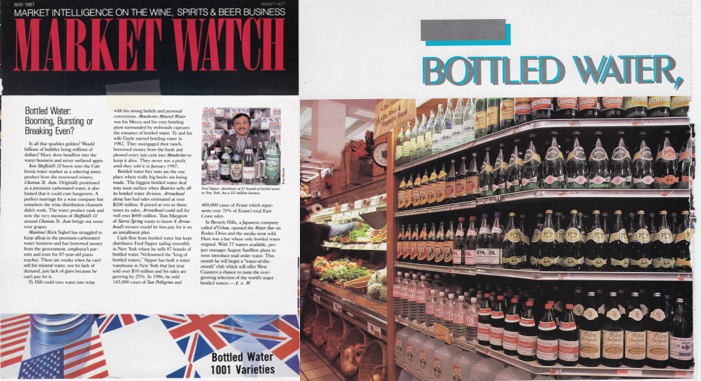
In 2012, the US annual consumption of bottled water reached 9.67 billion gallons (36.6 billion liters) or 30.8 gallons (116.6 liters) per person. As for the world, global consumption reached 300 billion liters or 79.2 billion gallons in 2014.
The consumption of bottled water varies from place to place, and it mostly has to do with how safe tap water is in the area. Bottled water is also used in emergency responses when disaster strikes. However, on the other end of the spectrum, it is critiqued for its negative effect on the environment. The usage of plastic bottles is mainly blamed as plastic has a massively negative impact on the environment. Despite that, most companies still use plastic bottles because it’s much cheaper than glass.
Nestle has become the number one bottled water company in the world. They now own Perrier, San Pellegrino, Poland Springs, Arrowhead, Calistoga, Ozarka, Deer Park, Zephyrhills, Aqua Panna, Vittel and their filtered water brand under the Nestle Pure banner. DANONE now owns Evian, Volvic, Badoit, and more. Coca Cola owns Dasani and Smartwater and Pepsi Cola owns Aqua Fina. Keurig owns CORE.
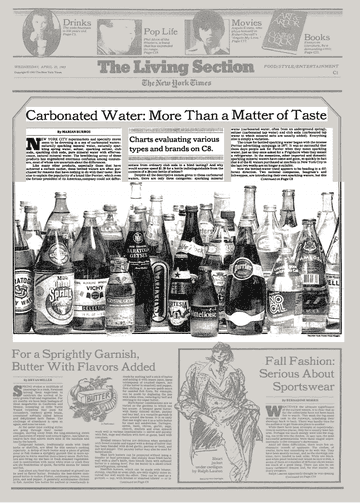
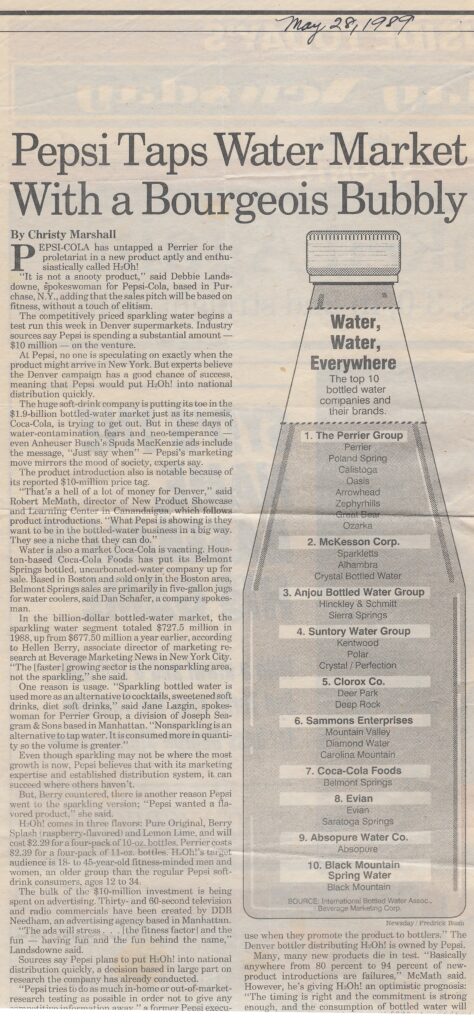
Key Takeaways
Bottled water is now consumed across the globe, with its own distinctive history. Bottled water is a major player in the beverage industry, and its scope is still growing exponentially.
The entire beverage industry continues to evolve, and it is worth the while for every aspiring beverage entrepreneur to stay in touch with the industry insights, as well as to turn to historical takes like this one for clearer perspective. By doing that, you will be better-positioned to create a new shakeup in the industry.
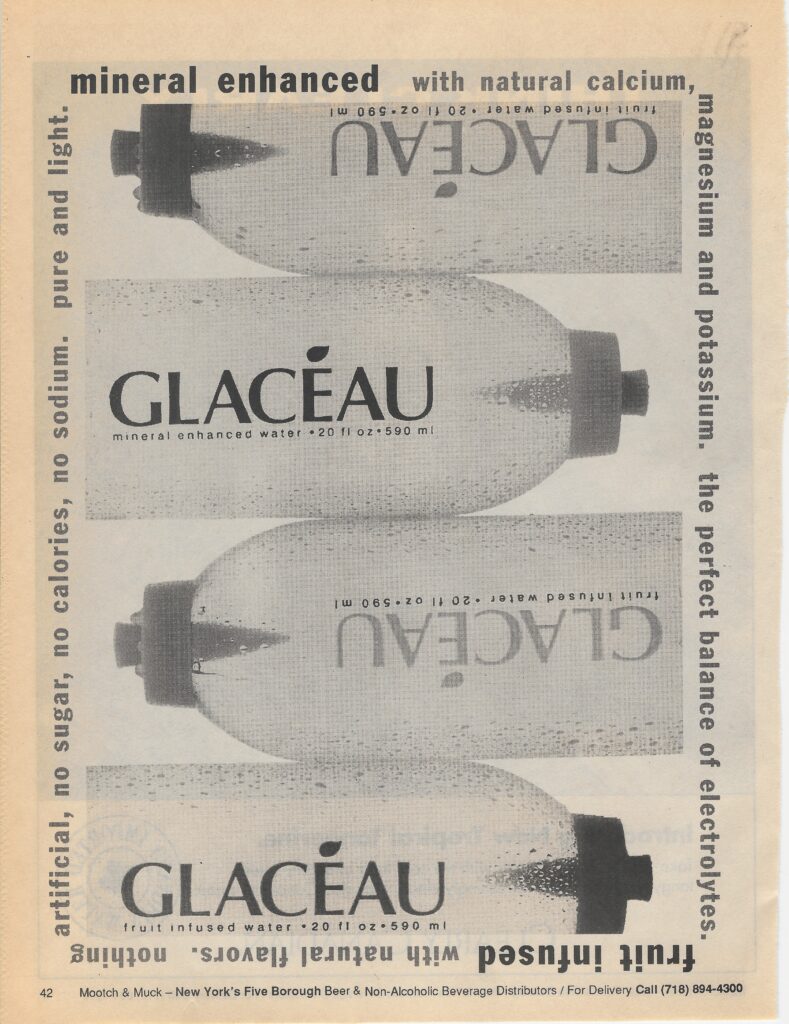
For more information about Cascadia Managing Brands please visit our website.
Retail & Grocery: Amazon.com, Inc.
In only 24 years, Amazon.com Inc. has evolved from a little online bookstore to the most extensive digital retailer in the world. Generating $177.9 billion in net sales from its over 300 million users in 2017, it is a giant in many markets, including retail and groceries.
As the company remains true to its four guiding principles – customer obsession rather than competitor focus, passion for invention, commitment to operational excellence, and long-term thinking – its sell-through position strengthened with inroads in new categories. Among other things, it has led Amazon to acquire Whole Foods Market as its subsidiary.
In 2018, the growth trend continues. Despite demanding more dollars for marketing from vendors, Amazon has met planned sales expectations for the second quarter for many categories (14 out of 25), exceeding plans in 9 categories in the changing natural food industry.
Orders from Whole Foods mainly surpassed its planned expectations due to deep discounts for Amazon Prime members, while higher marketing fees discouraged vendors from investing in promotion for their products. As a result, more vendors have opened Seller Central accounts, which allowed them to manage costs better and simplify product launch, and increased direct shipment from Prime Now.
Those are only two critical areas to watch. But if you want to learn more about other changes in 2018, there are other trends to look out for in retail and grocery as the year draws to an end at Amazon.
A Growing Amazon Prime Membership
In May 2018, the cost of Amazon Prime membership rose to $119. And while some vendors viewed it negatively, most don’t expect any significant impact on service use. It comes down to the advanced features included in the membership to its users, including Amazon’s marketing tools and expanded offering on Amazon.com platform. A natural food vendor even said:
“Amazon keeps offering more and more benefits [for Prime members], so I don’t think [the higher annual fee] will have any impact. Prime members value that service so much.”
And payment fees and commissions to Amazon were also raised in most vendor contracts. Because of the 10% increase in rates, all vendor contracts from 2017 are invalid, and sellers need to sign a new 2018 contract.
But it’s important to remember the terms in the new contract are negotiable. And while vendors do encounter additional fees, like fulfillment fees, inventory fees for storage, out-of-stock penalties, and accrual fees, it’s important to accept Amazon’s demands and negotiate a 2018 contract.
Amazon Competition Is Low
Amazon’s main competitors are Walmart.com and The Kroger Co., closely followed by Walmart’s Jet.com, Walmart brick-and-mortar stores, Target Corp. and Thrive Market Inc. However, most vendors agree that no e-commerce platform or store chain can compete with the retail giant when it comes to grocery retail.
However, Kroger and Target are making breakthroughs in grocery assortments and improving the shopping experience for their consumers. It seems to be generating interest among some vendors, as Kroger, for example, is placing standard category managers in charge of specific category managers and buyers. But it is yet to generate the amount of attention required to disrupt Amazon’s large-scale operation.
Amazon Prime Is Helping Whole Foods
Amazon’s Prime benefits (10% discount on all items and steep “Prime Member Deals”) helped increase sales during the second quarter in 2018 at Whole Foods Markets. The Amazon subsidiary saw an initial redemption rate between 60%-70% in June, but the figure is likely to reach 80% by year-end.
Prime Deals and promotion also aided vendors in their efforts. Many natural and organic vendors stated their Whole Food orders exceeded expectations, with almost all of them meeting their planned goals.
Despite this, vendors will bear the cost of those mandatory 10% discounts, which may result in several sellers reducing budgets allocated for promotion. However, for most of them, the price will be worth the effort if Amazon can deliver the right sales volume with Prime discounts. And according to the amount of sales Amazon made – it can.
Grocery Sales on Amazon.com and Fresh
In 2018, Amazon has made a lot of efforts to increase its foothold into groceries. It has led natural and organic food vendors to a very successful quarter with their sale of non-perishables on Amazon.com, than of perishable items sold on AmazonFresh. Also, over 65% of vendors exceeded planned order figures, which led some of them to improve their use of Amazon Marketing Services (AMS).
More and more vendors are turning to e-commerce SEO and search terms with AMS for marketing, than, for example, offering customer incentive programs such as coupons. On the other hand, vendor spending on ads has also increased but not significantly. Still, the combined efforts of both marketing tactics resulted in a higher revenue stream than in previous years.
In contrast, vendors who used AmazonFresh did not meet expectations. Their sales quotas fell below plan. They attribute this to significant reorganizations within the company, as AmazonFresh and Prime Now are hiring more staff in Seattle and distribution networks get realigned to handle perishable goods.
New Expansion Plans
Another critical factor influencing all of these changes is Amazon’s plan for rapid expansion. In short order, AmazonFresh is planned to move from the current eight-hour delivery format to a new two-hour delivery, which will make it stand out even more from the competition.
A new app is also set to be launched shortly, as Amazon wants to consolidate all of its grocery platforms in one place. But, until now, there is yet to be an integration of all purchases into one system, as Amazon.com, AmazonFresh, Prime Now, and Amazon Go remain separate from Whole Foods.
Finally, Amazon is moving towards direct shipments to reduce the reliance on United Natural Foods Inc. The plan is to allow room for rapid expansion of Prime Now with a hub-and-spoke system that will revamp warehouses and transportation logistics for perishables.
Follow Trends and News
Keep up to date with the latest innovations, trends, news, and so much more in the retail and food and beverage. Stay on top of best practices when it comes to marketing and sales, and gain insight from inside the industry.
With new developments each week, a piece of news, a new strategy or business model might catch your eye and lead you to apply it to your business to –
Seize the opportunity! Grow to scale! Realize the potential of your business! Become a leading influence on the market!
For more information about Cascadia Managing Brands, please go to www.cascadiamanagingbrands.com
Creating North America’s Premier Food Wholesaler
In June 2018, United Natural Foods (UNFI) and Supervalu decided to uproot North America’s wholesale distribution by combining their efforts to create a premier wholesale distributor. UNFI is the largest distributor of natural organic products in the United States and Canada, while Supervalu is the largest publicly traded wholesaler in the U.S.
Their joint enterprise indicates a rapidly changing infrastructure landscape in which consolidation among stakeholders in the supply chain is fast-becoming the new norm. And this has become a prime example of how manufacturers, suppliers, distributors, and retailers are pushing for change in Canada and the United States.
Based on this recent industry development, here are the most significant benefits of creating a premier food wholesaler in North America.
Adding Value to Customers and Stakeholders
Transforming into North America’s top wholesale food distributor is beneficial for all parties involved in the supply chain, including consumers and shareholders.
First off, it allows distributors to create a diversified consumer base. As they merge to form a common front, it automatically expands the consumer base to open up new opportunities to different stakeholders and increase distribution across all fronts. Delivering an extensive and comprehensive product offer to UNFI’s existing natural and organic products has allowed Supervalu to create a genuinely “better for you” offer.
As high-value products like organic meat and products become available to a broader audience, it enables cross-selling opportunities for different stakeholders on a much larger scale. A much more significant market across the United States and Canada gives wholesalers a much broader geographical location to work with and increase their market reach. The much more extensive scale has not only enabled growth but has improved their efficiency and effectiveness across the board.
The increase in capacity relies heavily on leveraging scalable systems. Focusing attention on streamlining larger operations has enabled different stakeholders to optimize their processes. Combined with the increased use of technology to achieve this goal has equipped all involved parties to meet customer expectations and reduce future expenses at the same time.
And in the case of UNFI and Supervalu, it also delivers significant synergy, which by the third year can create a run rate cost opportunity of more than $175 million.
Advanced Build-Out-The-Store Growth Strategy
With UNFI and Supervalu heading the enterprise, many smaller brands have joined the food super-wholesaler. Both giants contributed in equal measure in securing brands which create the supply chain. UNFI brought Blue Marble Brands, Woodstock Farms, Tumaro’s, Rising Moon, and Field Day to the fold, while Supervalu contributed with Essential Everyday, Culinary Circle, Market Centre, and Wild Harvest, among others.
Handing each brand a seat at the table has enabled them to have a united market presence, and create an advanced build-out-the-store growth model. The strategy is relatively simple and relies on increasing the product range to bring in attractive products to the store, and build a comprehensive and diversified product portfolio.
With each brand specializing in a specific food group, everyone is specializing in premier products. It expands the offer to the consumer, who is treated to a variety of quality, natural, organic, free-range, and specialty food items.
Complementary Contribution
Combining the two wholesalers into one has also merged their capabilities. It works because both UNFI and Supervalu share certain features. However, their most significant advantage is in the different and unique abilities, which essentially compliment one another.
UNFI’s revenue contribution is divided among Independent Natural Retailers (26%), Supermarkets (30%), Supernatural Retailers (33%), and other revenue (11%) such as e-commerce retailers and foodservice customers.
Supervalu’s revenue contribution is divided among Independent Regional Supermarkets (61%), Unified Groceries (29%), SVU FL (5%; regional chains, multi-stores, and single stores), and other (5%) which includes military and corporate revenue.
The combined revenue of UNFI and Supervalu is therefore divided among Independent Regional Supermarkets (48%), Unified Groceries (17%), Supernatural Retailers (14%), Independent Natural Retailers (11%), other revenue (8%), and revenue from SVU FL (3%).
It diversifies the consumer base for both wholesale retailers, as well as their revenue streams. In doing so, both UNFI and Supervalu can adapt to the fast growth of retailers and supply their demand for products.
A Compelling Opportunity
The opportunity for the premier food wholesaler will be to unlock the potential value across the business using synergy. Synergetic cooperation between the two organizations will improve the business process and inside operations, but also create a unified presence when dealing with outside services.
A combined effort has a more significant effect than individually either UNFI or Supervalu would have ever been able to achieve, and will benefit multiple aspects of the premier food wholesaler:
- Revenue – a diversified revenue stream from cross-selling, offering high-growth products in stores and expanding the private label offering (net sales expected to reach over $21 billion);
- Capital expenditure – increasing optimization of the supply chain and more effective capacities in distribution centers minimizes costs and expenditure (strong cash flow can reduce leverage and improve the credit profile);
- Systems and technology – combining IT systems and cyberinfrastructure of both companies will enhance automation and use of technology to streamline the business process;
- Operations – joint operations, increased capacity and a united strategy all increase efficiency inside the business model and stood to benefit everyone across the supply chain;
- SG&A (selling, general & administrative expenses) – increased capacity minimizes expenses especially by optimizing lease contracts and reducing fleet-related costs;
- Expanding Gross Margin – aligning strategies and methods of inbound logistics and adopting a professional service unit to monitor the process will help with larger capacity.
Ready to Learn More About the Food and Beverage Industry?
Stay up to date with the latest news and innovations in the food and beverage industry, and use what you learn to grow your business. It’s the best thing you can do for your brand, and all you have to do is realize the opportunity right in front of you to use its potential. Contact me or connect on twitter if you want to share with me your industry experience.
For more information about Cascadia Managing Brands go to www.cascadiamanagingbrands.com
